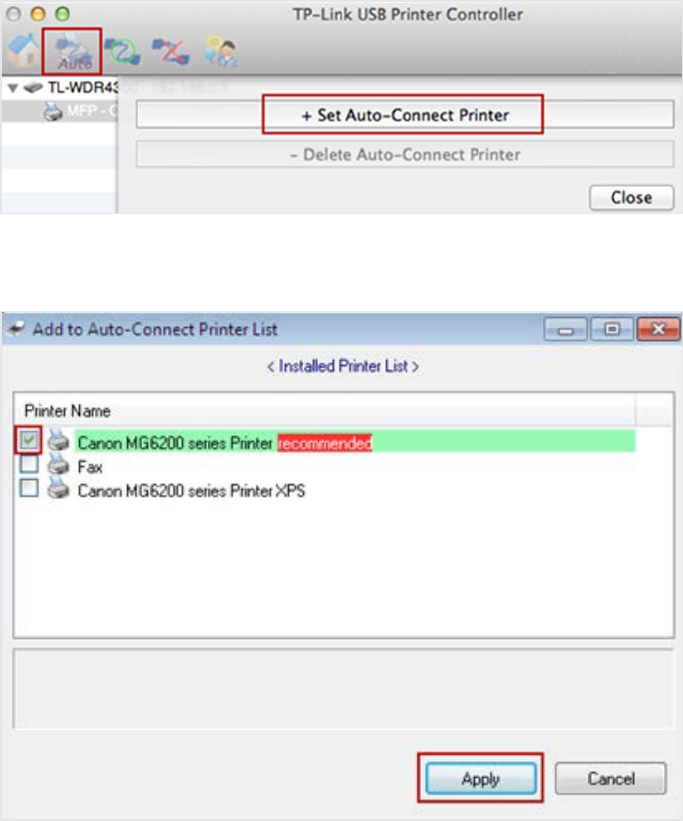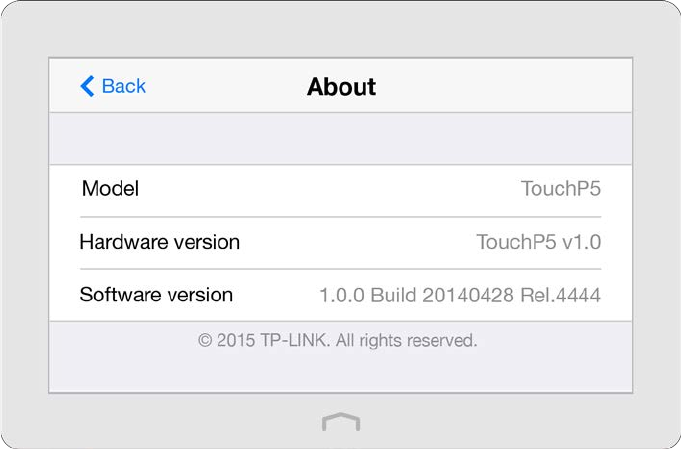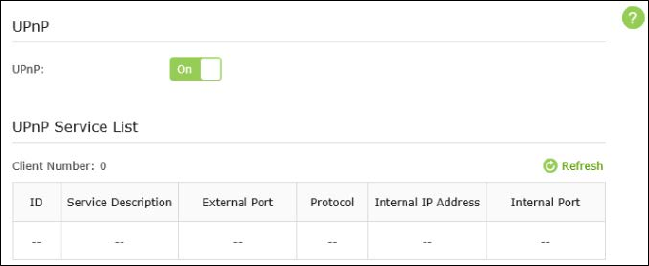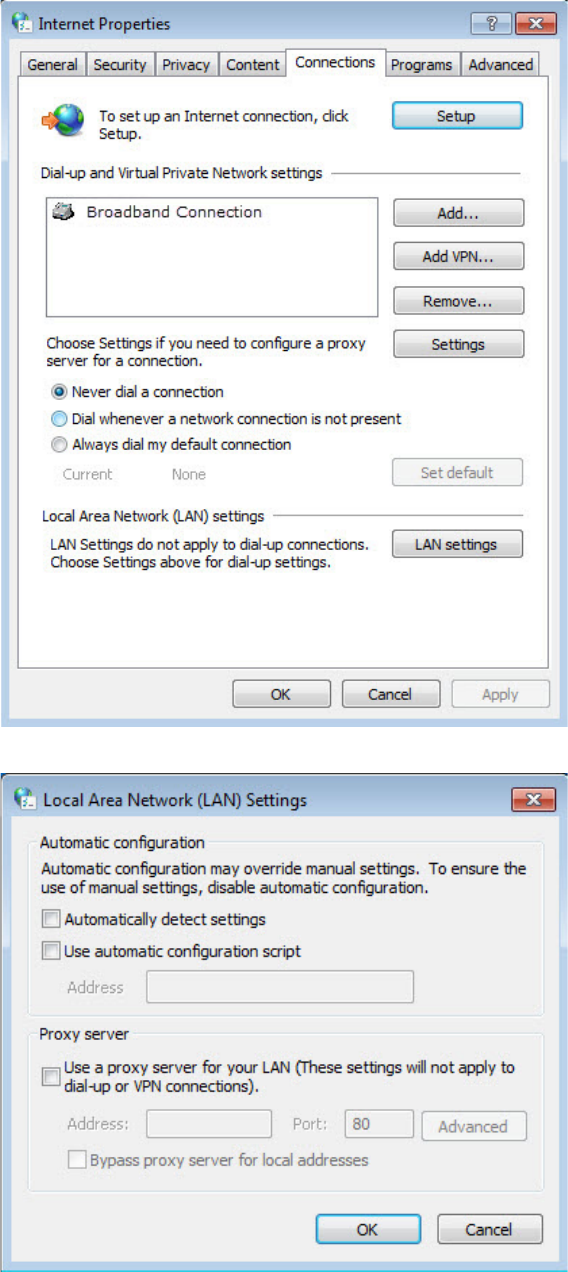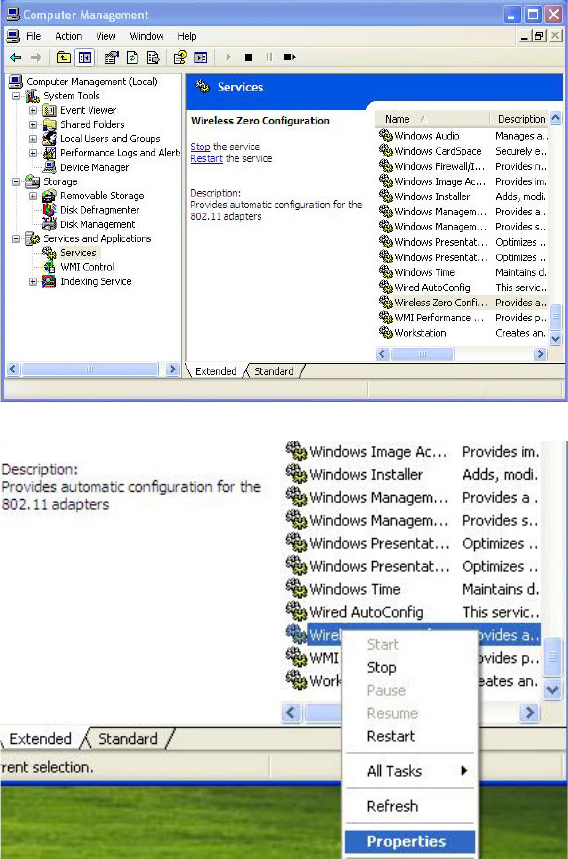TP Link Technologies P5 AC1900 Touch Screen Wi-Fi Gigabit Router User Manual
TP-Link Technologies Co., Ltd. AC1900 Touch Screen Wi-Fi Gigabit Router
User Manual

Touch P5
User Guide
AC1900 Touch Screen Wi-Fi Gigabit
Router
Contents
Chapter 1.
Get to Know About Your Router ............................................................................................................. 3
1.1 Product Overview ................................................................................................................................................................................. 4
1.2 Main Features .......................................................................................................................................................................................... 5
1.3 Panel Layout ............................................................................................................................................................................................. 6
1.3.1 The Front Panel ..................................................................................................................................................................................................... 6
1.3.2 The Back Panel ....................................................................................................................................................................................................... 7
1.4 Requirements for Operation ........................................................................................................................................................... 7
1.5 Position Your Router ............................................................................................................................................................................ 8
Chapter 2.
Configure your Touch P5 as a Router ................................................................................................... 9
2.1 Connect Your Router ....................................................................................................................................................................... 10
2.2 Log into Your Router ........................................................................................................................................................................ 11
2.3 Quick Setup ........................................................................................................................................................................................... 13
2.4 Mode Selection ................................................................................................................................................................................... 14
2.5 Wireless Settings ................................................................................................................................................................................. 15
2.6 WPS ............................................................................................................................................................................................................ 18
2.7 Guest Network ..................................................................................................................................................................................... 20
2.8 Parental Controls ................................................................................................................................................................................ 22
2.9 Devices Control ................................................................................................................................................................................... 25
2.10 Printer Server ........................................................................................................................................................................................ 27
2.11 DDNS ......................................................................................................................................................................................................... 31
2.12 LAN ............................................................................................................................................................................................................. 32
2.13 DHCP Server .......................................................................................................................................................................................... 33
2.14 QoS ............................................................................................................................................................................................................. 36
2.15 Clock .......................................................................................................................................................................................................... 39
2.16 Screen Settings .................................................................................................................................................................................... 42
2.17 Reboot & Reset .................................................................................................................................................................................... 43
2.18 Administrator Password ................................................................................................................................................................. 44
2.19 About ........................................................................................................................................................................................................ 45
2.20 USB Application .................................................................................................................................................................................. 46
2.20.1 Local Storage Sharing .................................................................................................................................................................................... 47
2.20.2 Remote Access via FTP Server .................................................................................................................................................................. 49
2.20.3 Media Sharing ..................................................................................................................................................................................................... 52
2.21 Set Up IPv6 Connection ................................................................................................................................................................. 55
2.22 NAT Forwarding .................................................................................................................................................................................. 57
2.22.1 Share Local Resources in the Internet by Virtual Server .......................................................................................................... 58
2.22.2 Open Ports Dynamically by Port Triggering .................................................................................................................................... 59
2.22.3 Make Applications Free from Port Restriction by DMZ ............................................................................................................ 60
2.22.4 Make Xbox Online Games Run Smoothly by UPnP .................................................................................................................... 61
2.23 Update the Firmware ....................................................................................................................................................................... 63
Troubleshooting Guide & FAQ ................................................................................................................................................................. 64
Appendix A: Specifications .................................................................................................................................................. 70
Appendix B: Glossary .............................................................................................................................................................. 72
1.1 Product Overview
What This Product Does
The Touch P5 AC1900 Touch Screen Wi-Fi Gigabit Router integrates four Gigabit Ethernet ports, Firewall, NAT-router and
Wireless AP. Powered by 3x3 MIMO technology, this router delivers exceptional range and speed, which can fully meet
the need of Small Office/Home Office (SOHO) networks and the users demanding higher networking performance. Your
wireless connections are radio band selectable to avoid interference in your area, and the four built-in Gigabit ports
supply high-speed connection to your wired devices.
Intuitive Touchscreen - Wi-Fi at Your Fingertip
TP-LINK’s Touch P5 features a 4.3 inch color touchscreen display, which provides easier installation and network
management with just a few taps.
Multi-Function Design - Meet Various Demands
TP-LINK’s Touch P5 can function as a router, repeater, or access point to best serve your networking needs now and in
the future.
802.11ac - The Next Generation of Wi-Fi
TP-LINK’s Touch P5 comes with the next generation Wi-Fi standard – 802.11ac, backward compatible with 802.11n and
3 times faster than wireless N speeds. With higher power efficiency and robust security, 802.11ac is the perfect way to
accelerate a home multimedia network and solve congestion that multiple devices may cause.
1900Mbps Concurrent Dual Band - More Bandwidth, Less Interference
With 1300Mbps wireless speeds over the crystal clear 5GHz band and 600Mbps over the 2.4GHz band, Touch P5 offers
you the flexibility of two dedicated networks and ensures amazing wireless performance. Simple tasks such as sending
e-mails or web browsing can be handled by the 2.4GHz band while bandwidth intensive tasks like online gaming or HD
video streaming can be processed by the 5GHz band - all at the same time.
Broad Wi-Fi Coverage and Targeted Connection
Featuring three detached external antennas, Touch P5 is able to boost Wi-Fi coverage throughout your home. Advanced
beamforming technology enables Touch P5 to focus Wi-Fi signal to connected devices, delivering a more targeted and
highly efficient wireless connection.
Multifunctional USB Port - Easy Storage and Sharing
Using the Touch P5’s multi-functional USB 2.0 and USB 3.0 ports, you can share a printer with multiple computers and
devices on your network and can also share files & media at home or via the FTP server while away from home.
Guest Network
Guest Network provides secure Wi-Fi access for guests sharing your home or office network in a controlled manner
without needing to expose private Wi-Fi access codes or other personal data.
IPv6 Supported
Touch P5 supports IPv6, which is the foundation of the next generation of the Internet and enables a range of new
services and improved user experience.
Chapter 1 Get to Know About Your Router 4
1.2 Main Features
Extra-large 4.3 inch capacitive colorful touchscreen surfaced with unbreakable toughened glass
Complies with IEEE 802.11a/b/g/n/ac, IEEE 802.3/3u, IEEE 802.3ab
1*10/100/1000Mbps shielded Internet Port, 4*10/100/1000Mbps shielded Ethernet Ports, supports Auto-
negotiation and Auto MDI/MDIX
Simultaneous Dual Band, with maximum speed up to 600Mbps 2.4GHz and 1300Mbps over 5GHz
User-friendly UI, convenient for users to configure the router and check network status
With wall mounting design, users can place the router flexibly
With one USB 3.0 Port and one USB 2.0 Port, support USB Storage Sharing, Print Server, FTP Server, and Media Server.
Share a printer locally and files & media with networked devices or remotely via FTP server
3 dual band external antennas and high power amplifiers provide maximum omni-directional wireless coverage
and reliability
Beamforming Technology brings a more targeted and highly efficient Wi-Fi connection
Supports wireless router, access point and repeater modes
Guest Network access provides secure Wi-Fi access for guests sharing your home or office network
Parental Controls allow parents or administrators to establish restricted access policies for children or staff
Supports PPPoE, Dynamic IP, Static IP, PPTP, L2TP Cable Internet access
Supports UPnP, Dynamic DNS, Static Routing, Flow Statistics, VPN Pass-through
Supports Virtual Server, Special Application and DMZ host
Supports WEP, WPA/WPA2, WPA-PSK/WPA2-PSK encryptions
Supports IPv6
Built-in NAT and DHCP server supports static IP address distributing
Supports firmware upgrade and Web management
Chapter 1 Get to Know About Your Router 5
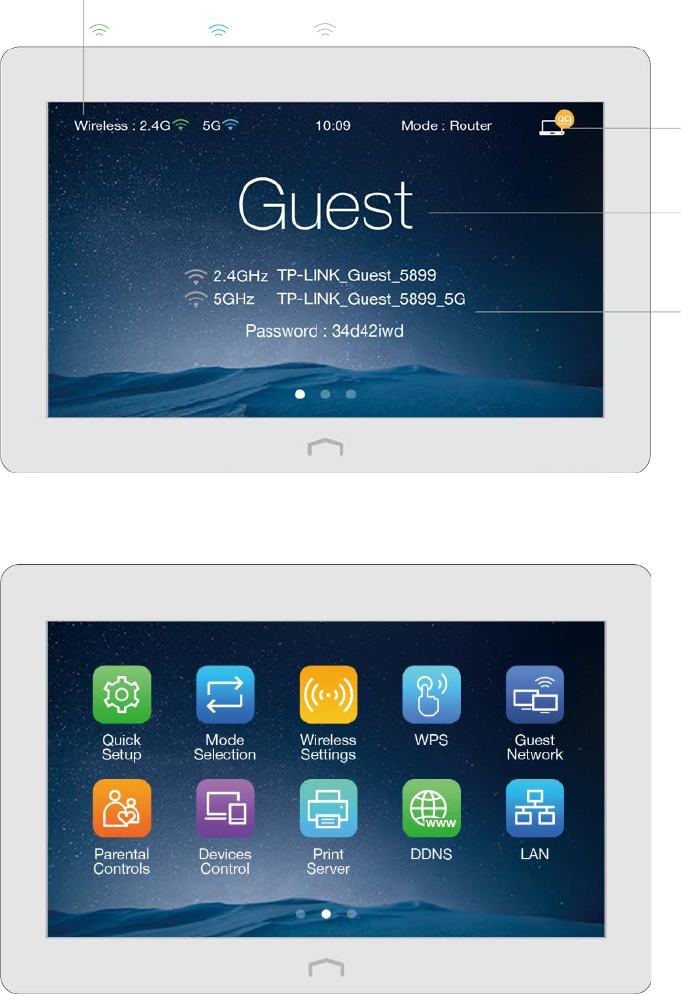
1.3 Panel Layout
1.3.1 The Front Panel
Power LED
The router’s power LED is right in front of the home screen. It will be solid on when the router is powered on.
Home Screen
Menu Screen
Tap the icons to perform various functions of the router, such as Quick Setup, Mode Selection, Parental Controls, etc.
Wireless Status
2.4GHz On 5GHz On Off
Total Clients
Tap here to view clients’ information
and block unauthorized clients.
Guest Network
Tap here to enable guest network
and change the settings.
Guest Network SSID & Password
(2.4GHz & 5GHz)
The password is periodically (daily
by default) generated by the
router.
Chapter 1 Get to Know About Your Router 6
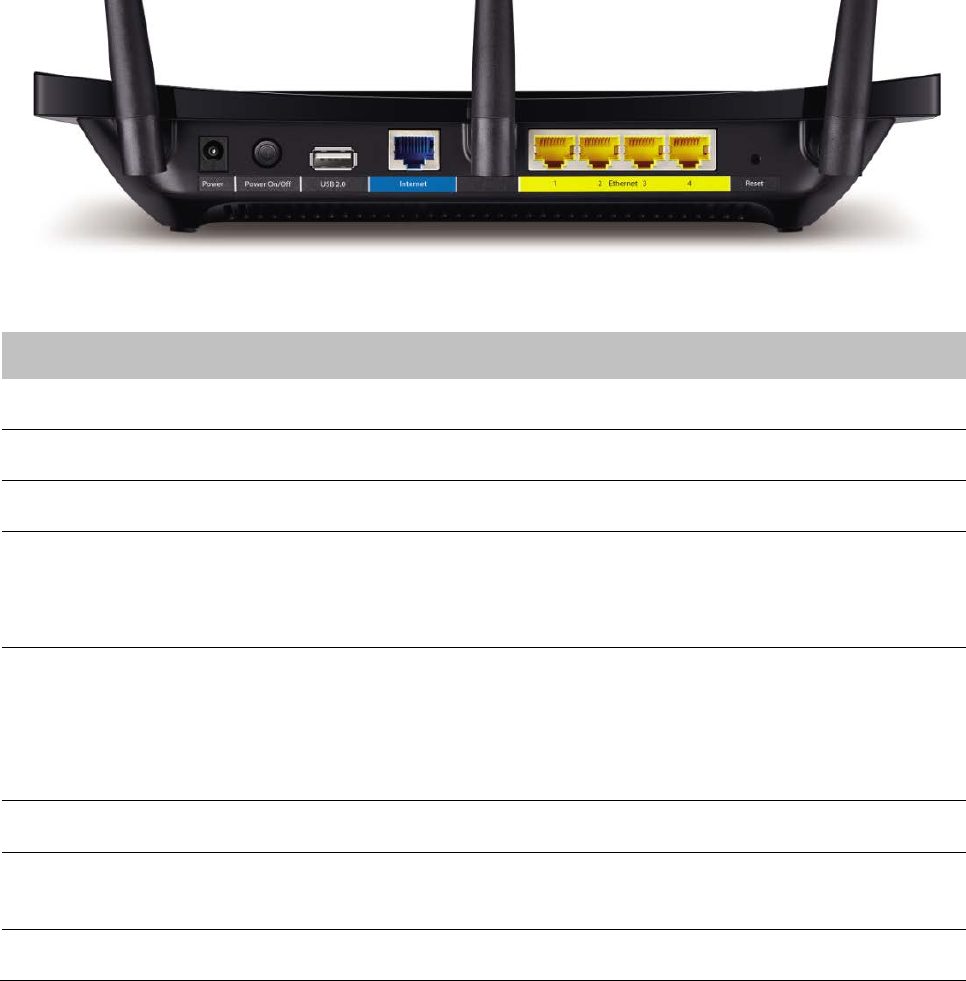
1.3.2 The Back Panel
The router’s back panel shows the connection ports, buttons and antennas. Refer to the following for detailed
instructions.
Item Description
Power For connecting the router to power socket via the provided power adapter.
Power On/Off The switch for the power. Press it to power on or off the router.
USB 2.0 For connecting to a USB 2.0 storage device or a USB 2.0 printer.
USB 3.0
It’s on the right front corner of the router.
For connecting to a 3.0 USB storage device or a 3.0 USB printer. It is also compatible with
USB 2.0 devices.
Internet
In router mode, it’s used for connecting to the DSL/cable Modem or Internet.
In repeater mode, it’s used for connecting to Ethernet-enabled device, working the same as
the Ethernet port.
In access point mode, it’s used for connecting to front router or Internet.
Ethernet (1, 2, 3, 4) These ports (1, 2, 3, 4) connect the router to the local computer(s).
Reset With the router powered on, use a pin to press and hold the Reset button until the Touch
P5 logo displays.
Antennas Used for wireless operation and data transmit. Upright them for the best Wi-Fi performance.
1.4 Requirements for Operation
To connect and use the router for Internet sharing, you must have the following:
• Broadband Internet Access Service (DSL/Cable/Ethernet).
• One DSL/Cable Modem that has an RJ45 connector (which is not necessary if the router is connected directly to the
Ethernet).
• Computers with an active Ethernet Adapter and an Ethernet cable with RJ45 connectors.
• TCP/IP protocol on each computer.
Chapter 1 Get to Know About Your Router 7
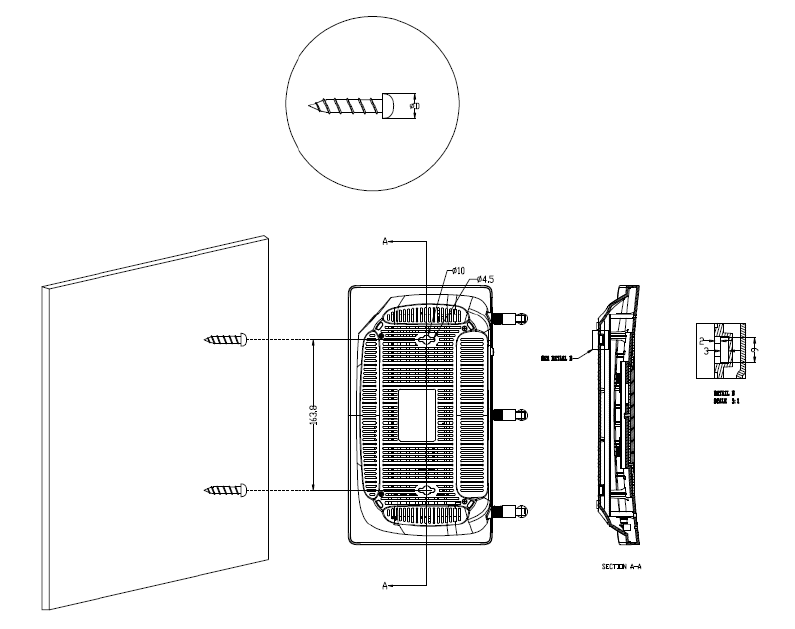
• Web browser, such as Microsoft Internet Explorer, Mozilla Firefox and Apple Safari.
1.5 Position Your Router
• Place the router in a well-ventilated place far from any heater or heating vent
• Avoid direct irradiation of any strong light (such as sunlight)
• Keep at least 2 inches (5 cm) of clear space around the router
• Operating Temperature: 0℃~40℃ (32℉~104℉)
• Operating Humidity: 10%~90%RH, Non-condensing
Generally, Touch P5 is placed on a horizontal surface. The device also can be mounted on the wall as shown below.
Note: The diameter of the screw, 3.5mm<D<6mm, and the distance of two screws is 163.8mm. The screw that project from
the wall need around 4mm based, and the length of the screw need to be at least 20mm to withstand the weight of the
product.
Chapter 1 Get to Know About Your Router 8
Chapter 2. Configure your Touch P5 as a Router
This chapter introduces how to connect and configure the Touch P5 in router mode. Most configuration can be done
through the touchscreen. Furthermore, some other features, such as the USB Application, IPv6 Connection, NAT
Forwarding and Firmware Upgrade, etc., can be configured through web-based utility.
Chapter 2 Configure your Touch P5 as a Router 9
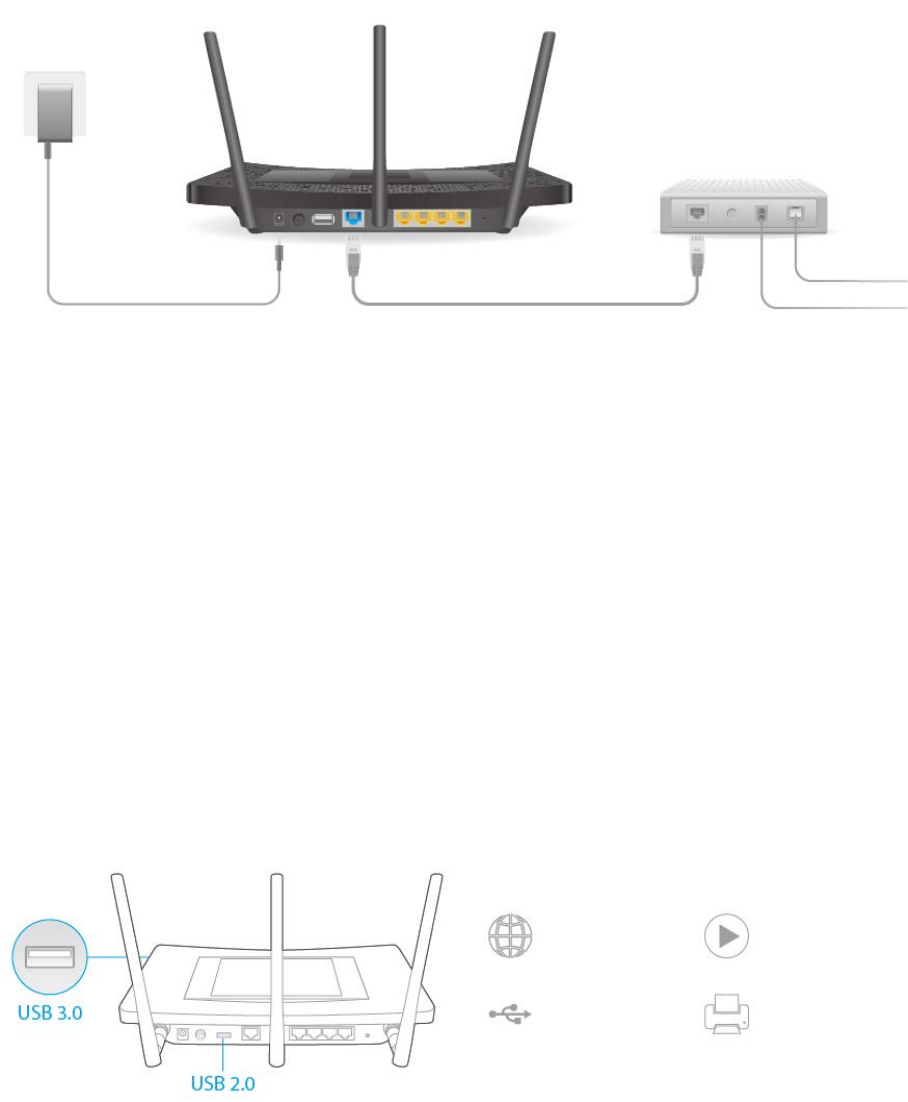
2.1 Connect Your Router
Follow the steps below to connect your router.
1. Install the antennas and position them vertically.
Note: If your Internet connection is through an Ethernet cable from the wall, instead of a modem, connect the
Ethernet cable directly to the router’s Internet port, and skip step 2,3,4.
2. Turn off the modem, and remove the backup battery if it has one.
3. Connect the modem to the Internet port on the router via an Ethernet cable.
4. Turn on the modem, and wait 2 minutes for it to restart.
5. Turn on the router and wait until the system boot on the screen completes.
6. Connect your computer to the router.
Option 1: Wired
Connect your computer’s Ethernet port to the Internet port on the router Touch P5 via the Ethernet cable.
Option 2: Wirelessly
Use the default SSID (Wireless Network Name) and Wireless Password printed on the product label of the router to
connect wirelessly.
Note: If you want to use the router for media sharing, storage sharing and printer sharing, please cable the USB storage
device or printer to the USB port of the router.
Remote Access
via FTP Server
Media Sharing
Local Storage
Sharing
Printer Sharing
Chapter 2 Configure your Touch P5 as a Router 10
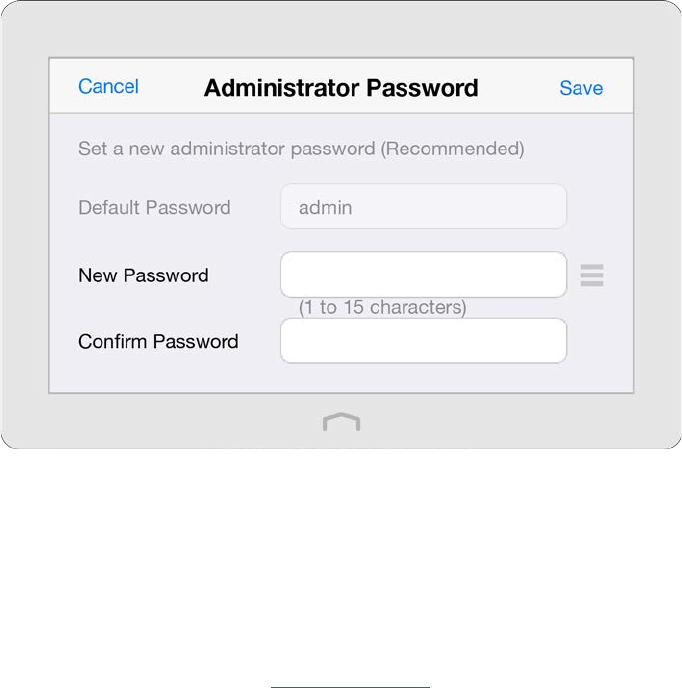
2.2 Log into Your Router
You can log in and manage the Touch P5 AC1900 Touch Screen Wi-Fi Gigabit Router through the touchscreen or web-
based utility.
Option 1: Through the Touchscreen (Recommended)
1. Tap the home button or the screen and slide to start the screen.
2. The first time you log in, you will need to set a new administrator password for your router. Enter the new password
and enter again to confirm. Tap Save, then follow the Quick Setup to complete the initial configuration..
Note: Apps on the touchscreen and web-based utility will need to use the new password that you have set to log in.
Option 2: Through Web-based Utility
The web-based utility can be used on any Windows, Macintosh or UNIX OS with a web browser, such as Microsoft
Internet Explorer, Mozilla Firefox or Apple Safari. Follow the steps below to log into your router.
1. If the TCP/IP Protocol on your computer is set to the static (fixed) IP address, you need to change it to obtain an IP
address automatically.
2. Open a web-browser on your computer, visit http://tplinkwifi.net and log in with the default username and
password (
admin/admin
).
Chapter 2 Configure your Touch P5 as a Router 11
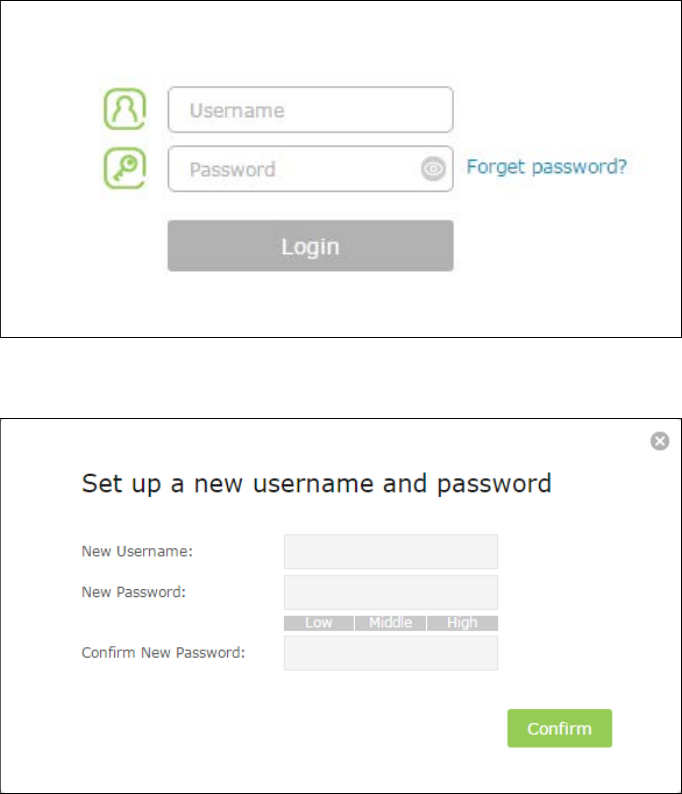
3. The first time you log in, you will need to set up a new username and password for your router. Enter your new
username and password and the new password again to confirm. Click Confirm.
Note: Apps on the touchscreen will also need to use the new password that you have set to log in.
Chapter 2 Configure your Touch P5 as a Router 12
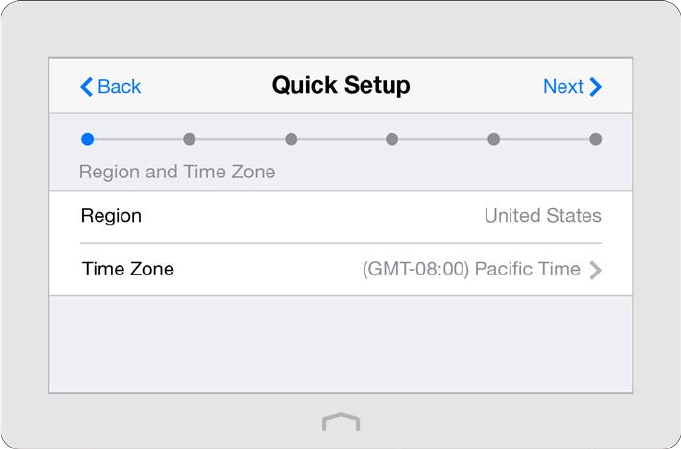
2.3 Quick Setup
The Quick Setup app will guide you through the process to set up your router to access the Internet.
1. On the menu screen, tap the Quick Setup icon to open it.
2. Set your Region and Time Zone and tap Next.
3. Follow the on-screen instructions to complete the setup.
Note:
If you change the preset wireless network name (SSID) and wireless password during the quick setup process, all your
wireless devices must use the new SSID and password to connect to the router.
Chapter 2 Configure your Touch P5 as a Router 13
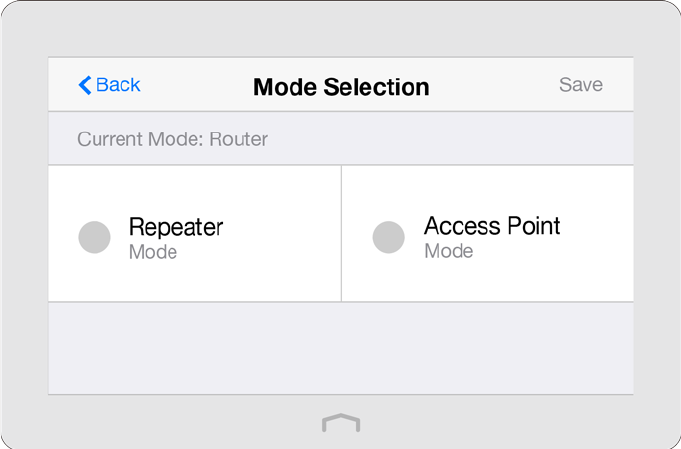
2.4 Mode Selection
The Mode Selection app helps you easily switch Touch P5 to a router, repeater or an access point.
Router Mode (Default): The device can provides Internet access for multiple wired and wireless devices
simultaneously.
Repeater Mode: The device can extends your existing wireless coverage by repeating the wireless signal.
Access Point Mode: The device can transforms your existing wired network to a wireless network.
1. On the menu screen, tap the Mode Selection icon to open it.
2. Select your desired mode, and tap Save.
Note:
The device will reboot to make your changes take effect, please do NOT operate during the process.
Chapter 2 Configure your Touch P5 as a Router 14
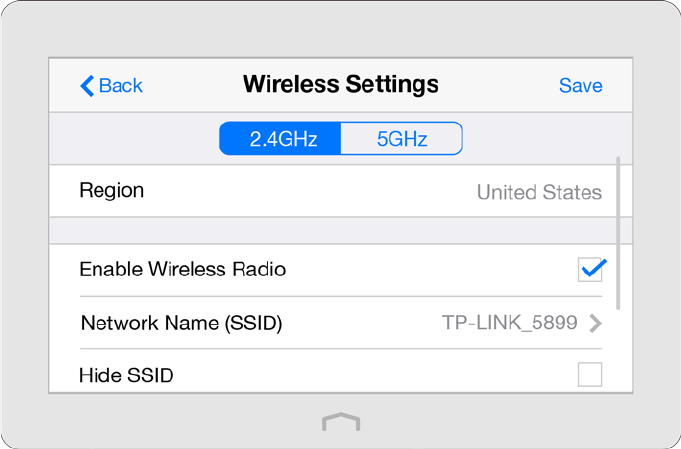
2.5 Wireless Settings
The Wireless Settings app helps you customize the wireless settings including the wireless radio, wireless network
name, password and security option, etc., according to your needs.
On the menu screen, tap the Wireless Settings icon to open it. Set your Region.
To enable or disable the wireless function:
Select the wireless network 2.4GHz or 5GHz and enable the Wireless Radio. If you don’t want to use the wireless function,
just uncheck the box. If you disable the wireless function, all the wireless settings won’t be effective.
To change the network name (SSID) and hide SSID:
Select the wireless network 2.4GHz or 5GHz and enter a new SSID using up to 32 characters. The default SSID is TP-
LINK_XXXX and the value is case-sensitive.
Note:
If you use a wireless device to change the wireless settings, you will be disconnected when the settings are effective.
Select the wireless network 2.4GHz or 5GHz and select Hide SSID, and your SSID will not broadcast. Your SSID won’t
display when you scan for local wireless network list on your wireless device and you need to manually join the network.
To change the security option:
Select the wireless network 2.4GHz or 5GHz and choose your Security Type, and enter the corresponding encryption
parameters, the router provides four options:
• No Security: Select this option to disable the wireless security.
• WPA/WPA2-Personal (Recommended): Select this option to enable the standard authentication method based on
a Pre-shared Key (PSK), also called passphrase. Its security level is the highest.
• WPA/WPA2-Enterprise: Select this option to enable the more advanced authentication method using a RADIUS
(Remote Authentication Dial In User Service) server. If selected, WPS function will be disabled.
Chapter 2 Configure your Touch P5 as a Router 15
• WEP: Select this option to enable basic authentication method if any of your client devices can only access the
wireless using WEP (Wired Equivalent Privacy).
To change the mode, channel or transmit power:
Select the wireless network 2.4GHz or 5GHz.
Mode: Select the desired mode.
• 802.11n only: Select only if all of your wireless clients are 802.11n devices.
• 802.11g/n mixed: Select if you are using both 802.11b and 802.11g wireless clients.
• 802.11b/g/n mixed:
Select if you are using a mix of 802.11b, 11g, and 11n wireless clients.
Note: When 802.11n only mode is selected, only 802.11n wireless stations can connect to the modem router. It is
strongly recommended that you select 802.11b/g/n mixed, and all of 802.11b, 802.11g, and 802.11n wireless
stations can connect to the modem router.
• 802.11ac only (5GHz): Select only if all of your wireless clients are 802.11ac devices.
• 802.11 n/ac mixed (5GHz): Select if you are using both 802.11n and 802.11ac wireless clients.
• 802.1111a/n/ac mixed (5GHz): Select if you are using a mix of 802.11ac, 802.11n and 802.11ac wireless clients. It is
strongly recommended that you select 11a/n/ac mixed.
Channel Width: Select the channel width from the list. The default setting is automatic, which can adjust the channel
width for your clients automatically.
Channel: Select the channel you want to use from the list. This field determines which operating frequency will be used.
It is not necessary to change the wireless channel unless you notice interference problems with another nearby access
point.
Transmit Power: Select either High, Middle, or Low to specify the data transmit power. The default and recommended
setting is High.
Advanced wireless settings:
Advanced wireless settings are for those have a network concept. If you are not familiar with the settings on this page,
it's strongly recommended that you keep the provided default values; otherwise it may result in lower wireless network
performance.
Chapter 2 Configure your Touch P5 as a Router 16
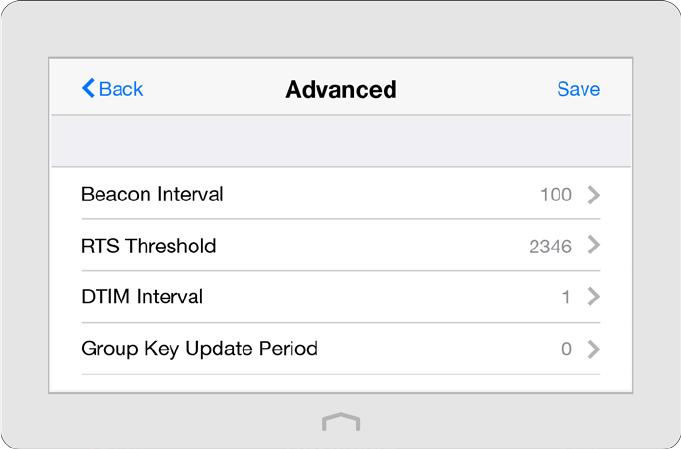
• Beacon Interval: Enter a value between 40 and 1000 in milliseconds to determine the duration between beacon
packets that are broadcasted by the router to synchronize the wireless network. The default is 100 milliseconds.
• RTS Threshold:
Enter a value between 1 and 2346 to determine the packet size of data transmission through the
router. By default, the RTS (Request to Send) Threshold size is 2346. If the packet size is greater than the preset
threshold, the router sends Request of Send frames to a particular receiving station and negotiates the sending
of a data frame, or else the packet will be sent immediately.
• DTIM Interval: This value determines the interval of the Delivery Traffic Indication Message (DTIM). Enter a value
between 1 and 15 beacon intervals. The default value is 1, indicates the DTIM Interval is the same as Beacon
Interval.
• Group Key Update Period: Enter the number of seconds (minimum 30) to control the time interval for the
encryption key automatic renewal. The default is 0, indicating no key renewal.
• Enable WMM:
The WMM function guarantees the packets with high-priority messages being transmitted
preferentially. It is enabled by default and highly recommended.
• Enable Short GI: This function is enabled by default and recommended to increase the data capacity by reducing
the Guard Interval (GI) time.
• Enable AP Isolation: If you want to confine and restrict all wireless devices connected to your network from
interacting with each other, but still able to access the Internet, select the Enable AP Isolation checkbox.
Chapter 2 Configure your Touch P5 as a Router 17
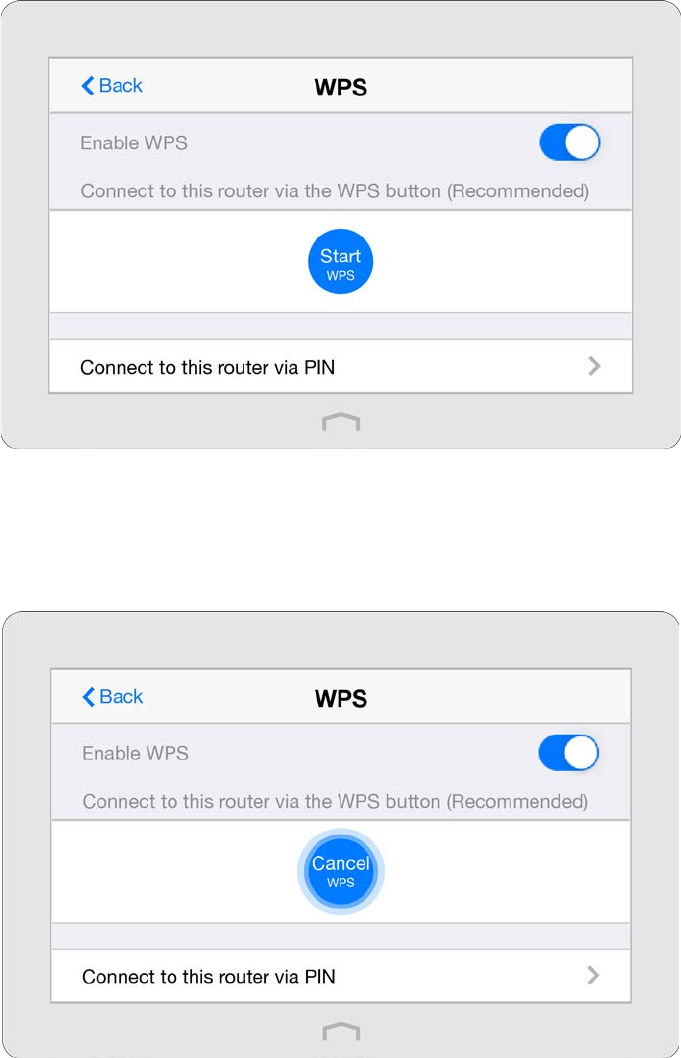
2.6 WPS
The WPS app helps you quickly establish a wireless connection between the Wi-Fi Protected Setup (WPS) supported
devices and Touch P5. Wireless devices that support WPS, including Android phones, tablets, and most USB network
cards, can connect to your router through this method. (WPS is not supported by IOS devices.)
Note: The WPS function cannot be configured if the wireless function of the router is disabled. Also, the WPS function will be
disabled if your wireless encryption is WEP. Please make sure the wireless function is enabled and is configured with the
appropriate encryption before configuring the WPS.
1. On the menu screen, tap the WPS icon to open it.
2. Connect either using either WPS Button method or PIN method
Option 1 Use the WPS Button (Recommended)
Use this option if your client device has a Wi-Fi Protected Setup button.
1. Tap the Start WPS button on the screen of the router, and the WPS button will show as below during the
process.
Chapter 2 Configure your Touch P5 as a Router 18
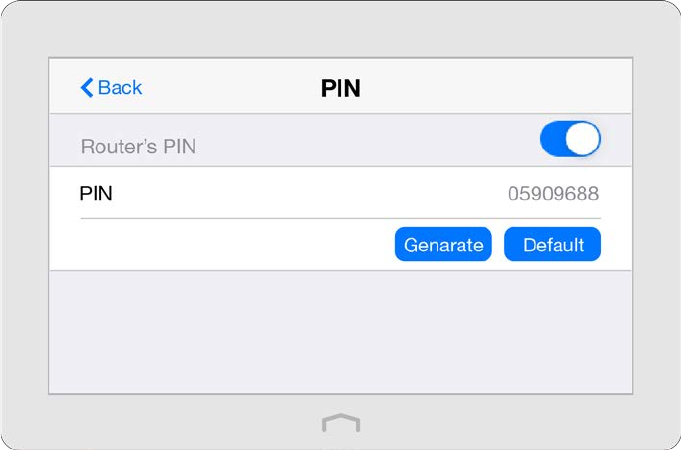
2. Immediately press the WPS button of the client device in two minutes.
3. Success will appear on the above screen, which means the client device has successfully connected to the
router.
Option 2 Use the PIN
Use this option if your client device asks for the router’s PIN.
1. Tap Connect to this router via PIN on the above screen of the router to get the router’s PIN, you can use the
default one or generate a new one.
2. On the client device, enter the router’s PIN to connect.
Chapter 2 Configure your Touch P5 as a Router 19
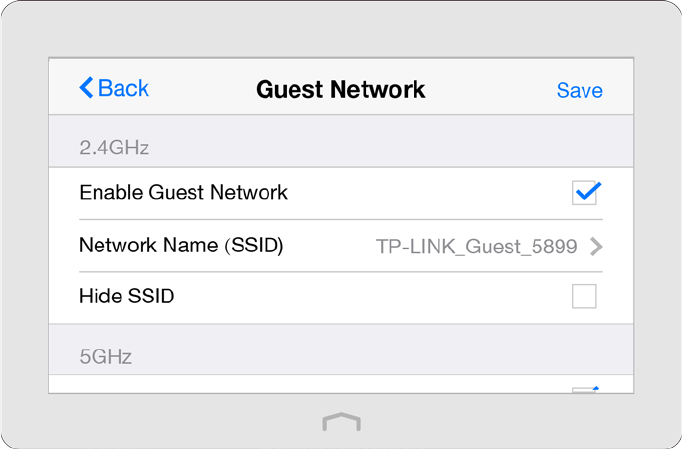
2.7 Guest Network
The Guest Network app allows you to provide Wi-Fi access for guests without disclosing your main network. When
you have guests in your house, apartment, or workplace, you can create a guest network for them. In addition, you
can assign permissions for guest network users to ensure the security and privacy of your main network.
On the menu screen, tap the Guest Network icon to open it.
To enable or disable the guest network:
Guest Network is enabled by default. If you don’t want to use the guest network function, just uncheck the box and
all the guest network settings won’t be effective.
To change the guest network name (SSID) and hide SSID:
1. Enter a new SSID using up to 32 characters. The default SSID is TP-LINK_Guest_XXXX/ TP-LINK_Guest_XXXX_5G
and the value is case-sensitive.
2. Select Hide SSID, and your guest SSID will not broadcast. Your SSID won’t display when you scan for local wireless
network list on your wireless device and you need to manually join the network.
To change the password and password update interval:
Guest Network 2.4GHz and 5GHz shares one password. By default, guest network password updates daily. You can
change the update interval to weekly, monthly.
Or you can also select Never to set a static password for your guest network. If you select Never, please create a password
between 8 and 63 ASCII characters or between 8 and 64 hexadecimal characters (0-9, a-f, A-F).
Chapter 2 Configure your Touch P5 as a Router 20
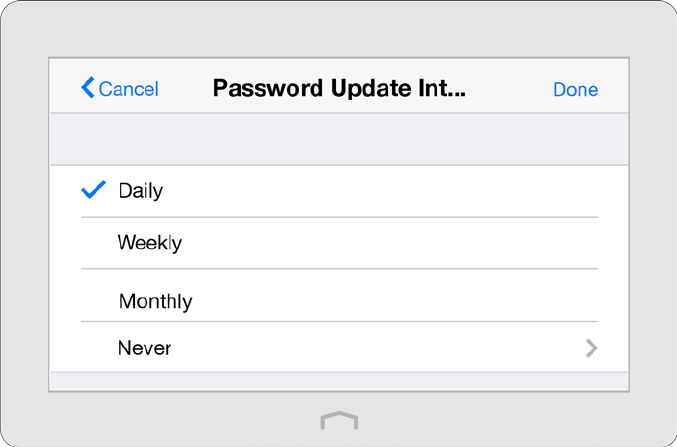
To limit the guest network authorities
• Allow guests to see each other
Select this checkbox to allow the clients in your guest network to access each other.
• Allow guests to access my local network
Select this checkbox to allow the clients in your guest network access your local network shares and printers, not
just Internet access.
Chapter 2 Configure your Touch P5 as a Router 21
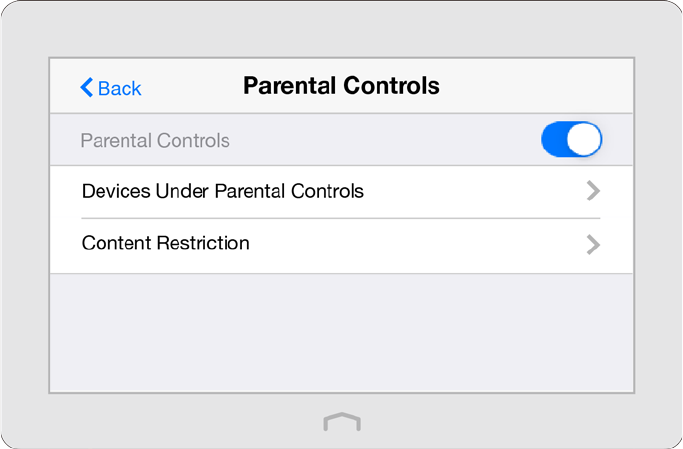
2.8 Parental Controls
The Parental Controls app allows you to block inappropriate, explicit and malicious websites; restrict access by certain
times of day (for example, client devices can only visit www.tp-link.com during office hours); and at the same time it
protects every device on your home network against malware and phishing through one central control point.
I want to: Control what types of websites my children or other home network users can visit and even the
times of day they are allowed to access the Internet.
For example
, I want to allow my children's devices (e.g. a computer or a tablet) to access only the
following websites, www.tp-link.com and Wikipedia.org, from 18:00 (6PM) to 22:00 (10PM) on
weekdays and not at other times.
How can I
do that?
1. On the menu screen, tap the Parental Controls icon to open it. Toggle the button to enable
Parental Controls.
2. Tap Devices Under Parental Controls and then
Add to add a device under parental controls.
Chapter 2 Configure your Touch P5 as a Router 22
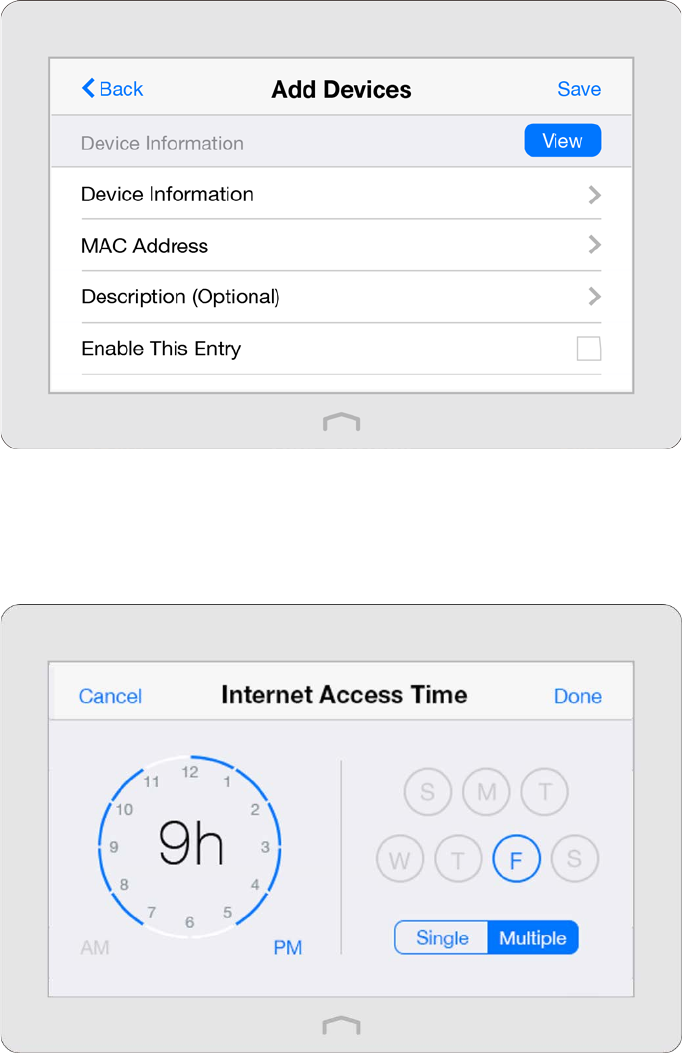
1) Tap View to select the device from the list. Or, enter the Device Name and MAC Address
manually if your desired device isn’t in the list.
2) Enter the Description of the device. Tap Enable This Entry.
3) Tap Internet Access Time to set time for the device.
4) Select the time period and the date, and tap Done.
Note: The access time schedule takes effect based on the router's system time. The system
time can be set through the Clock app.
5) Tap Save to make the settings effective.
Note: If you want to modify a device, tap the device to modify it. If you want to add or delete
a device, tap Edit on the Devices Under Parental Controls page to set up according to your
needs.
3.
Return to the home page of Parental Controls and tap Content Restriction to specify the
Chapter 2 Configure your Touch P5 as a Router 23

restriction policy.
1) Select the restriction mode.
• In Blacklist mode, the controlled devices cannot access any websites containing the
specified keywords during the Internet Access Time period.
• In Whitelist mode, the controlled devices can only access the websites in the whitelist
during the Internet Access Time period.
2) Tap Add to Add a New Keyword or Add a New Domain Name, then tap Done to save the
rule.
You can add up to 32 keywords for Blacklist and 32 domain names for Whitelist. Below are
some sample entries to allow access.
a. Enter a web address keyword (e.g. wikipedia) in blacklist to block access to the websites
containing that keyword.
b. Enter a web address domain name (e.g. www.tp-link.com
) allowed to access in
whitelist. Specify the domain suffix (eg. .edu or .org) to allow access only to the websites
with that suffix.
c. If you wish to block all Internet browsing access, do not add any keyword to the
Whitelist.
Note: If you want to modify a rule, tap the rule to modify it. If you want to add or delete a rule,
tap Edit to set up according to your needs.
4. Return to the Content Restriction page and tap Save.
Done! Now you can control your children’s Internet access according to your needs.
Chapter 2 Configure your Touch P5 as a Router 24
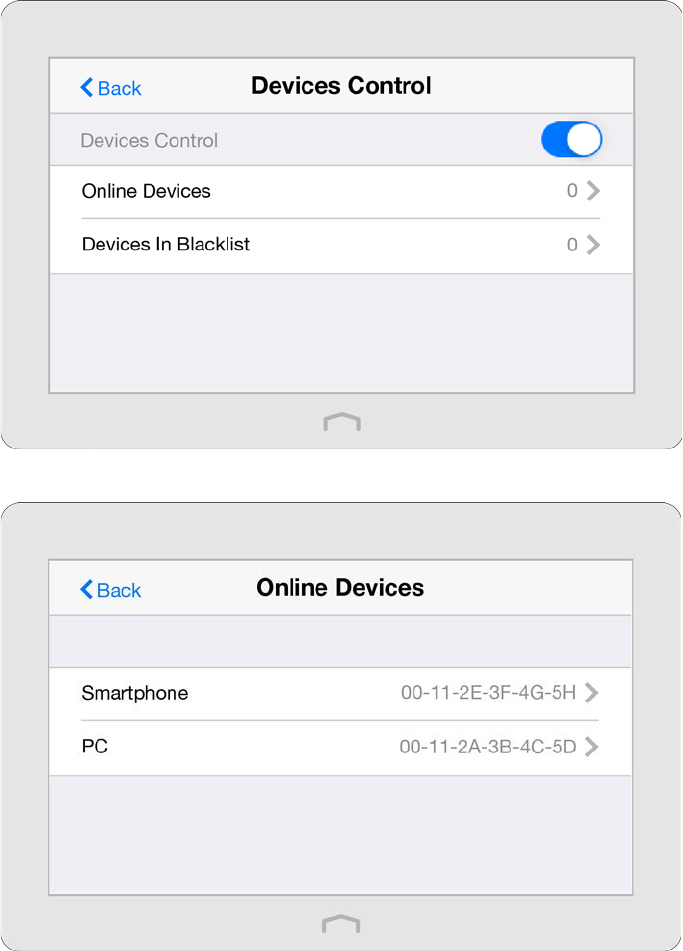
2.9 Devices Control
The Devices Control app helps to view the client information and block network access from unauthorized users (wired
or wireless).
I want to: Block some specific client devices to access my network.
How can I
do that?
1. On the menu screen, tap the Devices Control icon to open it. Toggle the button to enable
Devices Control.
2. Tap Online Devices to view the connected clients.
3. Select the device(s) to be blocked and tap Block.
Chapter 2 Configure your Touch P5 as a Router 25
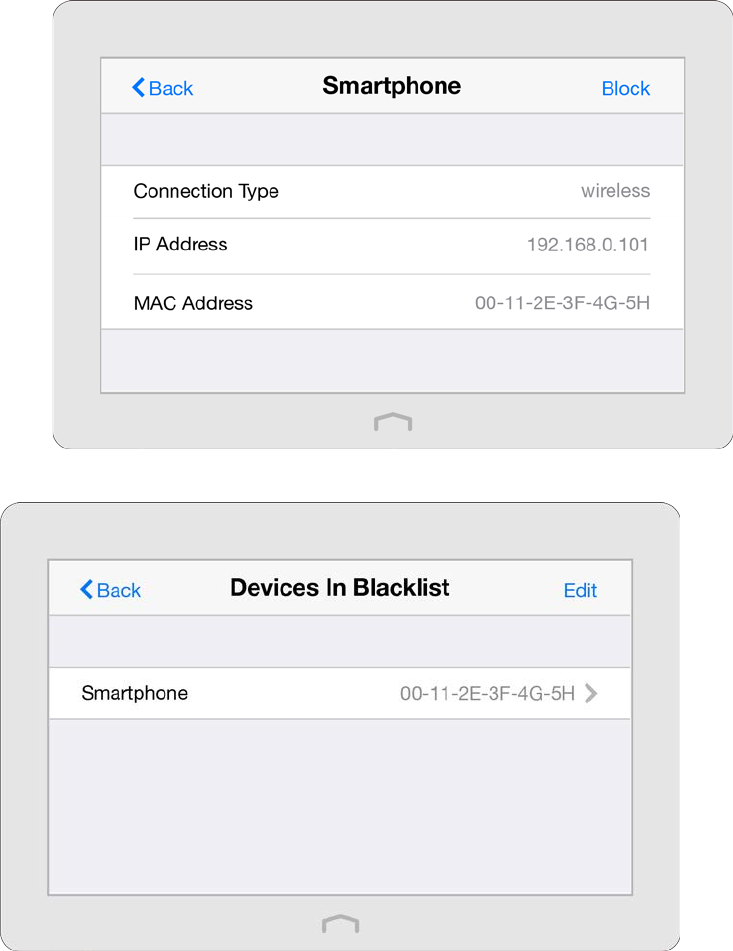
4. The blocked device(s) will be added to Devices in Blacklist automatically.
Note: If you want to add a device manually or delete a blocked device, tap Edit on the Devices In
Blacklist page to set up according to your needs.
Done! Now devices in the blacklist cannot access your network.
Chapter 2 Configure your Touch P5 as a Router 26
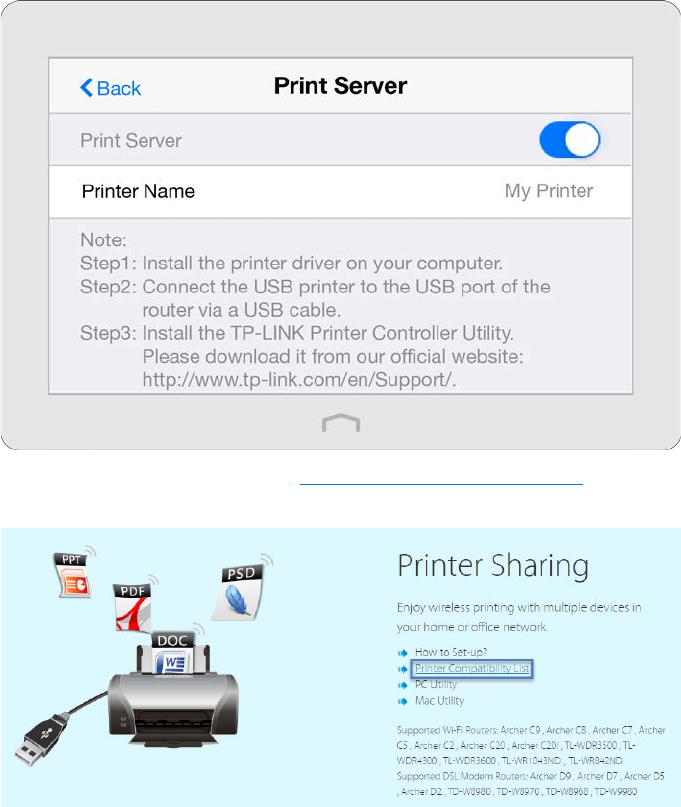
2.10 Printer Server
The Printer Server app guides you how to share a printer with different computers connected to the router.
1. Install the Driver of the Printer
Make sure you have installed the driver of the printer on each computer that needs printer service.
If you do not have the driver, contact the printer manufacturer.
2. Connect the Printer
Cable a printer to the USB port of the router with a USB cable. Wait several seconds until the Printer Name listed
on the screen.
Note: You can check Printer Compatibility List at
http://www.tp-link.com/app/usb/ to verify whether your printer
is supported by the router. Printers unlisted may be incompatible with the router.
3. Install the TP-LINK USB Printer Controller Utility
TP-LINK USB Printer Controller Utility helps you access the shared printer. Download and Install the utility on each
computer that needs printer service.
Chapter 2 Configure your Touch P5 as a Router 27
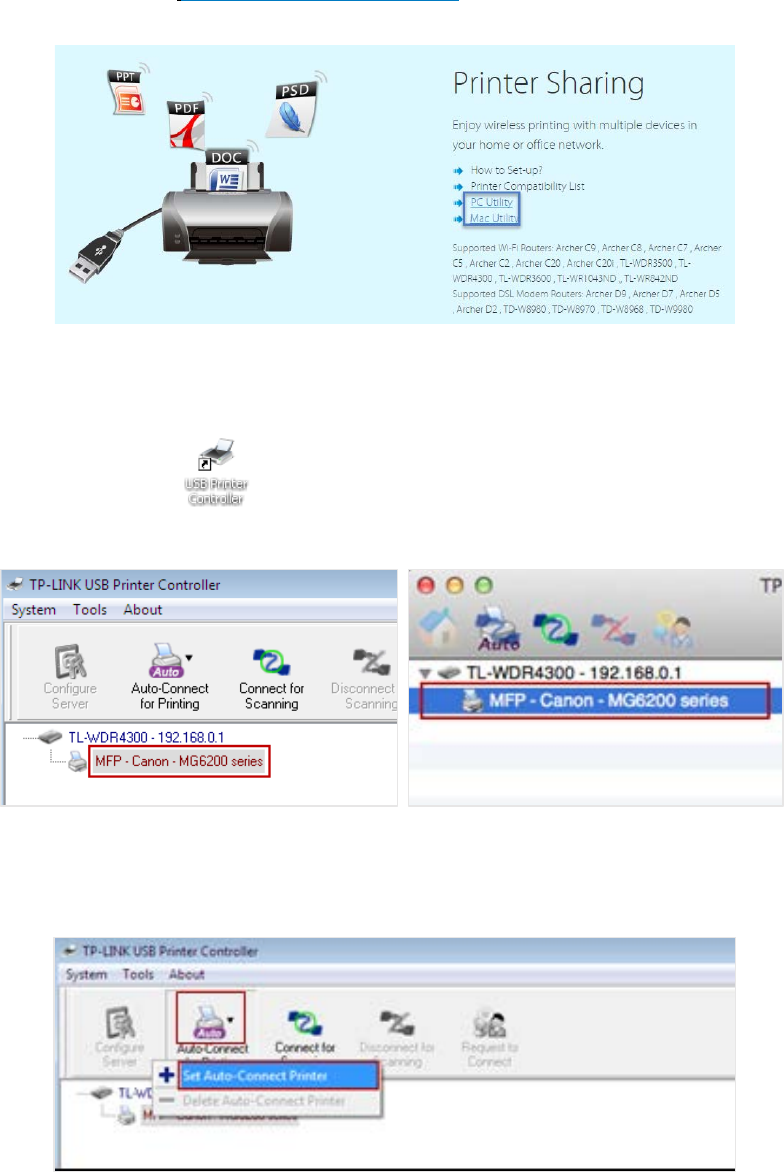
You can get the utility from http://www.tp-link.com/app/usb/
.
PC Utility is for Windows computer and Mac Utility
is for Mac computer.
4. Access the Printer
You should set the shared printer as Auto-Connect Printer on every computer that needs printer service.
1. Double-click the icon on your desktop to launch the USB Printer Controller.
2. Highlight the printer you share.
Windows Mac
3. Click the Auto-Connect for printing tab to pull down a list, then select Set Auto-Connect Printer.
Windows
Chapter 2 Configure your Touch P5 as a Router 28
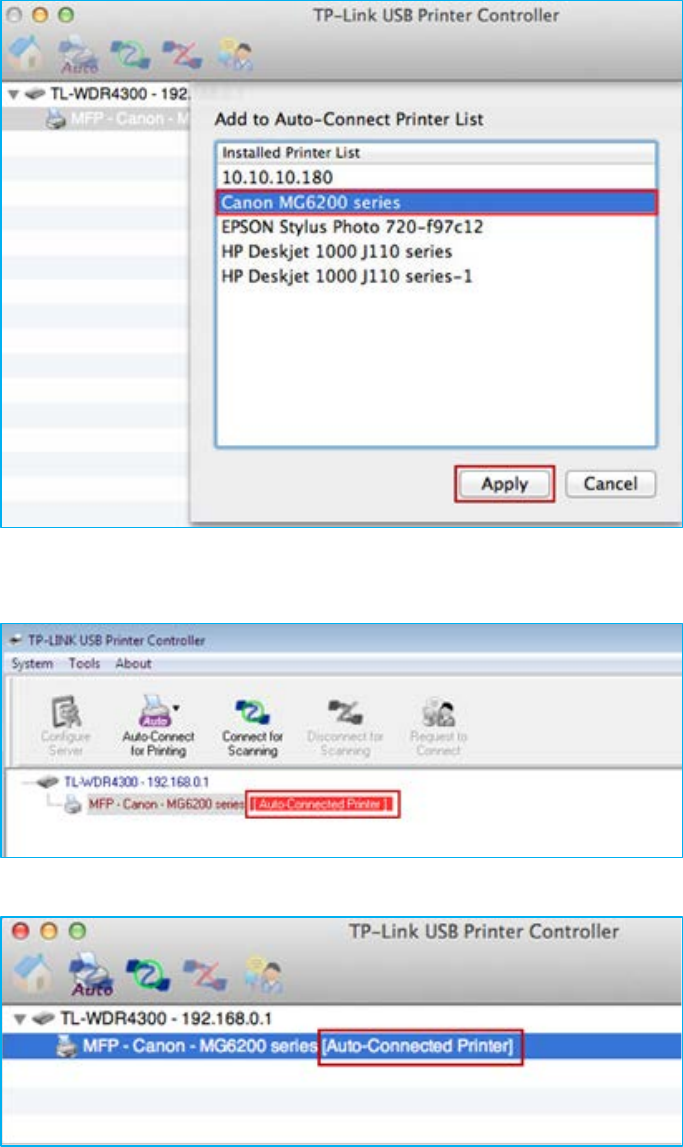
Mac
5. You will see the printer marked as Auto-Connect Printer. Now you can print with this printer.
Windows
Mac
Note: The Print Server also allows different clients to share the scan feature of MFPs (Multi-Function Printers). To scan
with TP-LINK USB Printer Controller, right-click the printer and select Network Scanner. Then, a scanning window will
pop up. Finish the scanning process following on-screen instructions.
Chapter 2 Configure your Touch P5 as a Router 30
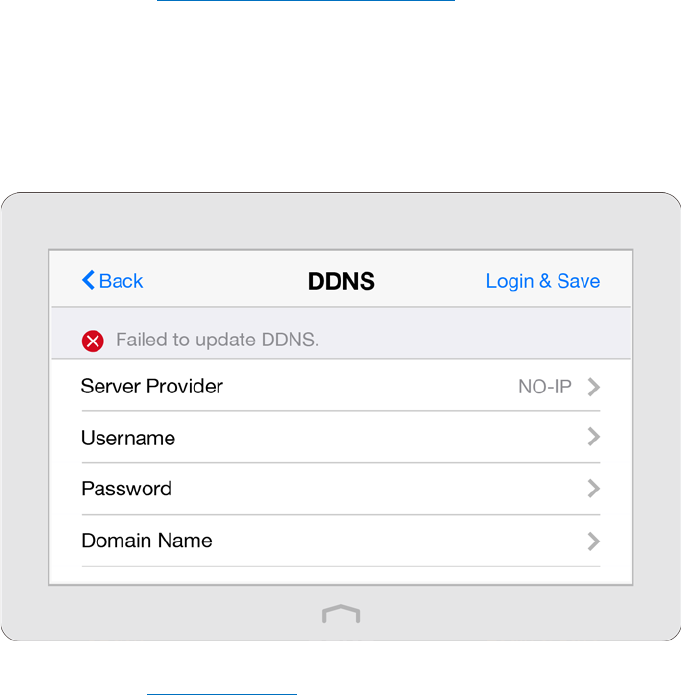
2.11 DDNS
The remote user needs to log in to http://Router’s WAN IP:port number to manage the router remotely or visit your
server (FTP, HTTP, etc.), which requires the remote user to know the router’s WAN IP. The ISP (Internet Service Provider),
however, usually assigns a dynamic WAN IP to the router. If the WAN IP changes, the remote user needs to reconfirm it
when needed. The Dynamic DNS (DDNS) can link the router’s dynamic WAN IP with a domain name, thus allow the
remote user to log in the router with the domain name and save the trouble of reconfirming.
Note: DDNS does not work if the ISP assigns a private WAN IP address (such as 192.168.0.x) to the router.
1. On the menu screen, tap the DDNS icon to open it.
2. Select a DDNS Service Provider (NO-IP or Dyndns). If you don’t have a DDNS account, please register an account
with a service provider such as www.dyndns.com.
3. Enter the username, password, domain name (such as lisadns.ddns.net), and select update interval of the account.
4. Tap Login & Save.
Note: If you want to use a new DDNS account, please Logout first, then login with the new account.
Chapter 2 Configure your Touch P5 as a Router 31
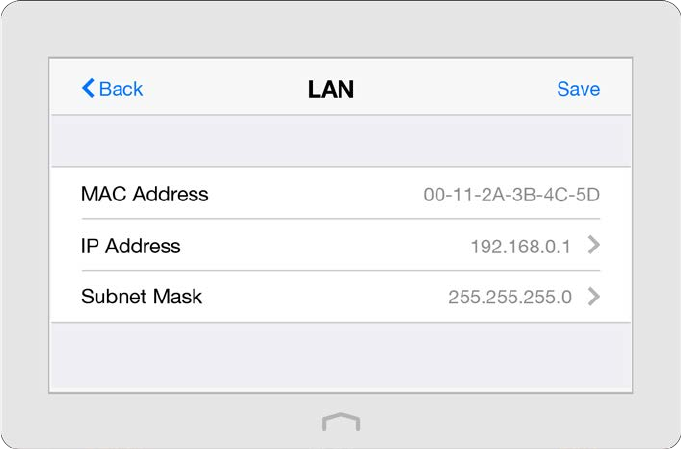
2.12 LAN
The LAN app helps to change the default LAN settings of the router. The router is preset with a default LAN IP 192.168.0.1,
which you can use to log in to its web-based management page. The LAN IP address together with the Subnet Mask
also defines the subnet that the connected devices are on. If the IP address conflicts with another device on your local
network or your network requires a specific IP subnet, you can change it.
1. On the menu screen, tap the LAN icon to open it.
2. Type in a new IP Address appropriate to your needs.
3. Select the Subnet Mask or custom one in dotted decimal format. The subnet mask together with the IP address
identifies your local IP subnet.
4. Tap Save.
Chapter 2 Configure your Touch P5 as a Router 32
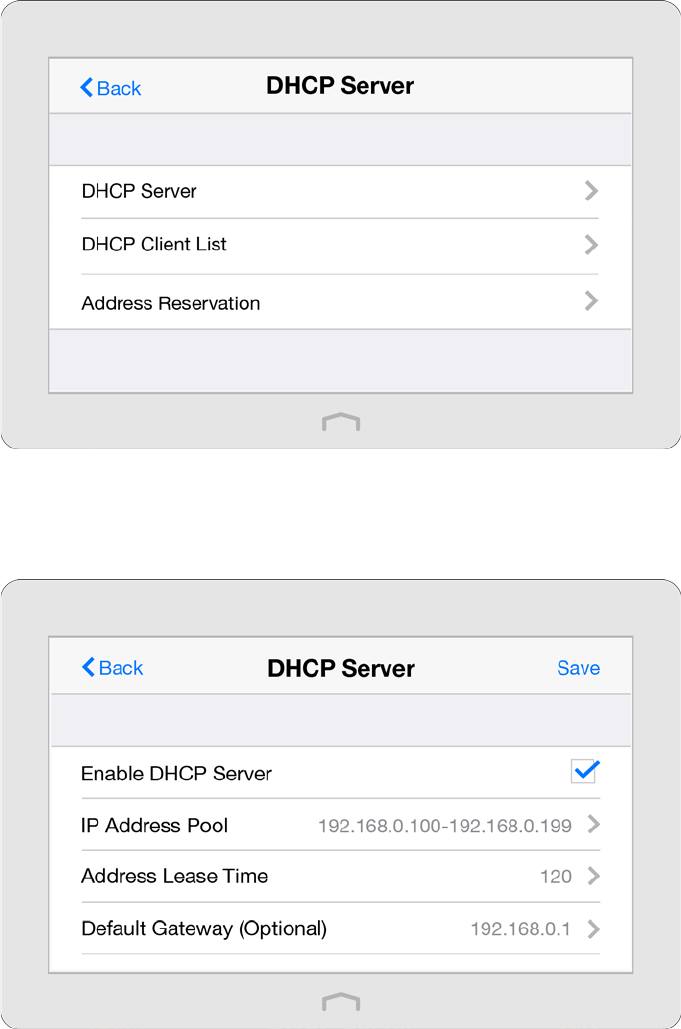
2.13 DHCP Server
The DHCP Server app can configure the router to act as a DHCP (Dynamic Host Configuration Protocol) server to assign
IP addresses to its clients and view client information from the client list. To use the DHCP server function of the router,
you must configure all computers on the LAN as "Obtain an IP Address automatically".
You can also manually reserve an IP address for a client that is connected to the router. Once reserved, the IP address
will only be assigned to the same client by the DHCP server. If there are some devices in the LAN that require permanent
IP addresses, please configure Address Reservation on the router for the purpose.
1. On the menu screen, tap the DHCP Server icon to open it.
2. Configure the DHCP settings according to your needs.
To set DHCP server of the router:
1. Select DHCP Server.
Chapter 2 Configure your Touch P5 as a Router 33
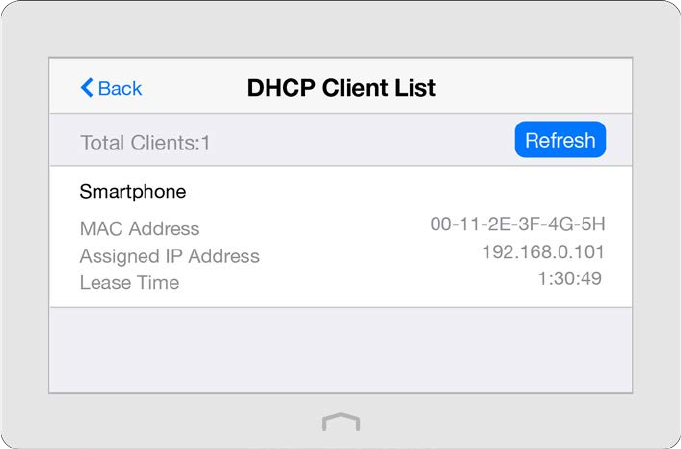
2. The Enable DHCP Server checkbox is enabled by default.
3. Specify the IP Address Pool, the start address and end address must be on the same subnet with LAN IP. The
router will assign addresses within this specified range to its clients. It is from 192.168.0.100 to 192.168.0.199
by default.
4. Enter a value for the Address Lease Time.
The Address Lease Time is the amount of time in which a DHCP client can lease its current dynamic IP address
assigned by the router. After the dynamic IP address expires, the user will be automatically assigned a new
dynamic IP address. The default is 120 minutes.
5. The Default Gateway is automatically filled the same as the LAN IP address of the router. Enter Primary DNS
and Secondary DNS if the ISP offers.
6. Tap Save.
To view the client information:
1. Select DHCP Client List.
2. You can view the information of connected client.
To reserve LAN IP addresses for a specified client device:
1. Select Address Reservation and tap Add to add an address reservation entry for your device.
Chapter 2 Configure your Touch P5 as a Router 34
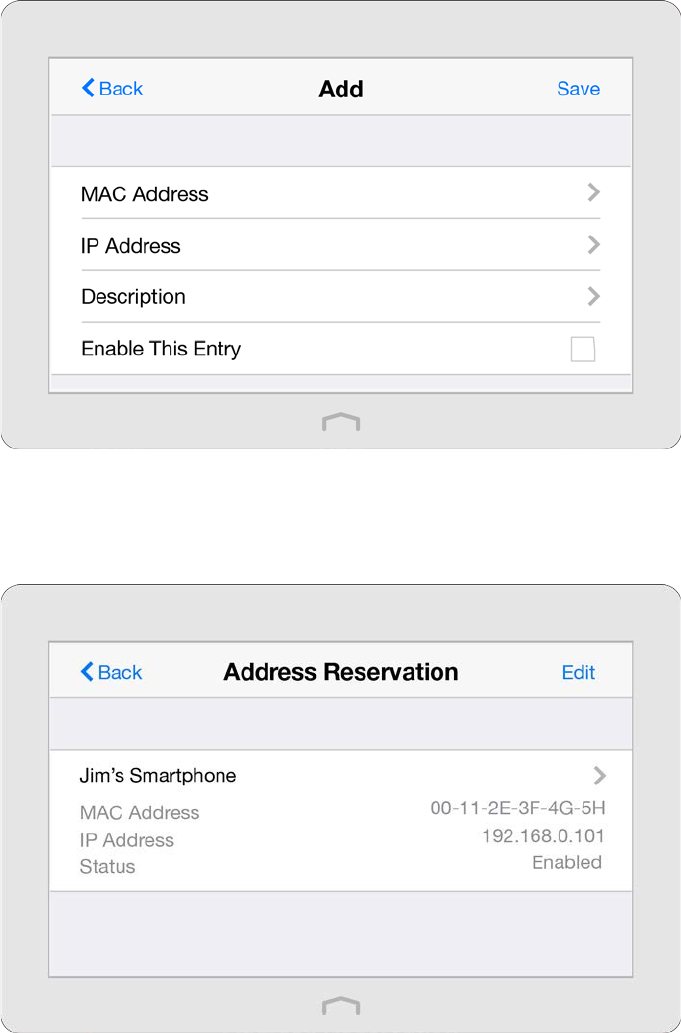
2. Enter the MAC Address of the device for which you want to reserve IP address.
3. Specify the IP Address which will be reserved for the device.
4. Enter the Description for the device.
5. Check to Enable This Entry and tap Save to make the settings effective (shown as figure below).
Note: If you want to modify a reserved address, tap the reserved address to modify it. If you want to add or
delete a reserved address, tap Edit to set up according to your needs.
Chapter 2 Configure your Touch P5 as a Router 35
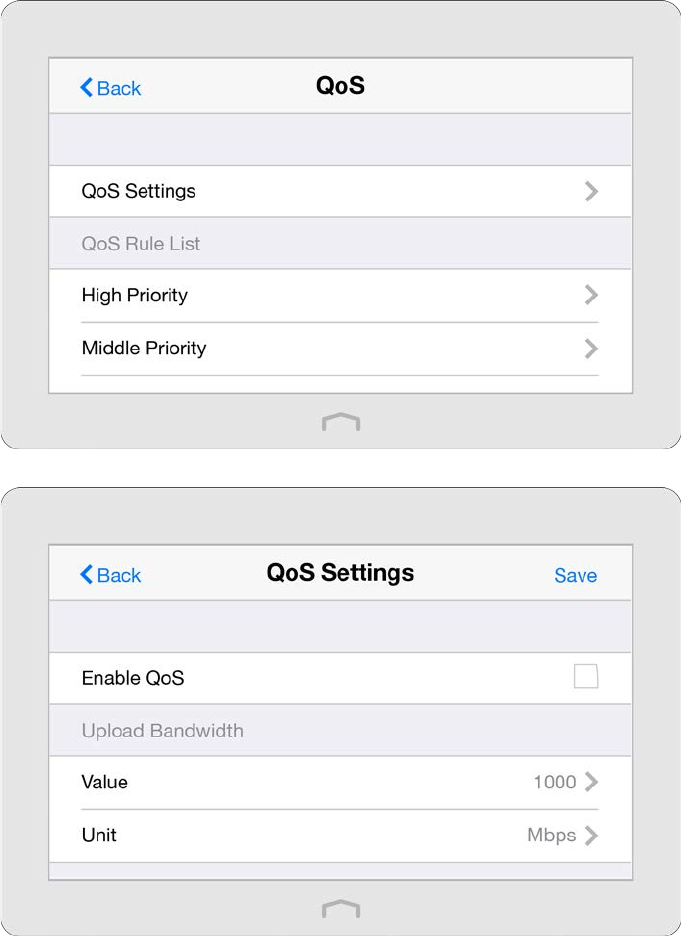
2.14 QoS
By default, the Internet bandwidth is shared by connected devices and applications, which means that the
bandwidth of each device or application is uncontrollable while they are sharing the Internet. When some device
is streaming video on Internet or downloading with P2P software, it will affect the Internet experience of other
applications. The QoS (Quality of Service) app can help to specify priority levels for some devices or applications,
thus help to avoid the situation.
1. On the menu screen, tap the QoS icon to open it.
2. Select QoS Settings to set the parameters of QoS.
1) Select Enable QoS checkbox
2) Set the maximum upload and download bandwidth provided by your service provider. 1Mbps is equal to
1024Kbps.
3) Select Advanced and drag the scroll bar to set the bandwidth priority percentage. Tap Done.
Chapter 2 Configure your Touch P5 as a Router 36
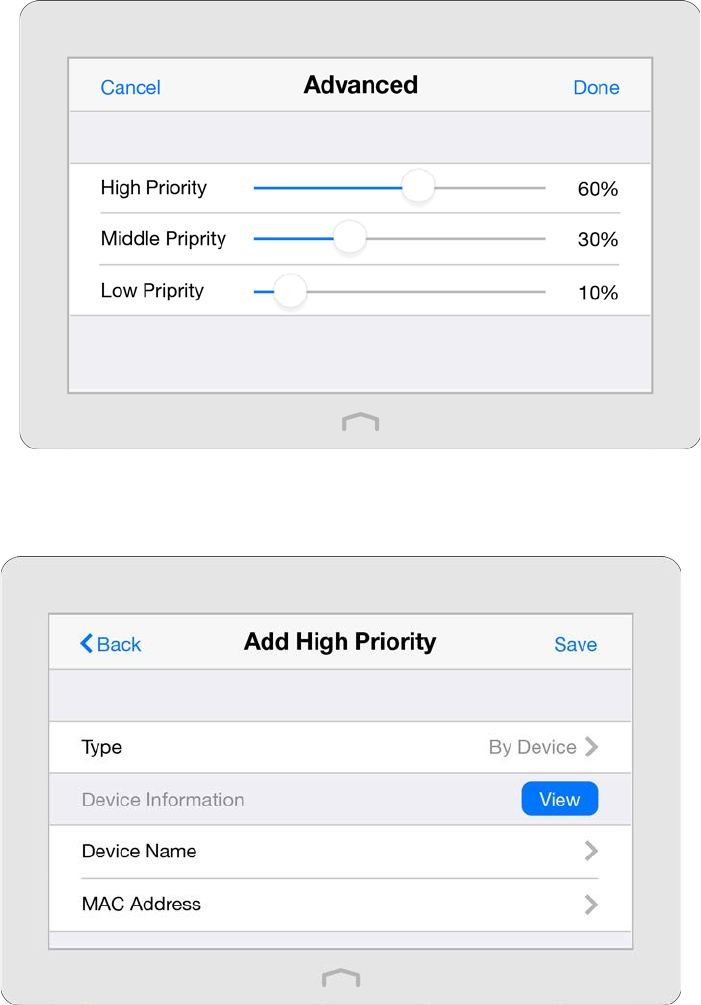
Note:
Add each priority up no more than 100%.
High priority is greater than middle priority, and middle priority is greater than low priority.
4) Tap Save.
3. Return to the home screen of QoS, and select High, Middle or Low Priority to Add the rules. Here we use High Priority
as an example.
4. Select By Device to add the rule:
Tap View to choose the respective device, if the device is not listed, enter the Device Name and MAC Address
manually. Tap Save to add the rule to the list.
Select By Application to add the rule:
Tap Application to select the corresponding application, if the application is not listed, tap Custom Application to
enter the application manually. Tap Save to add the rule to the list.
Chapter 2 Configure your Touch P5 as a Router 37
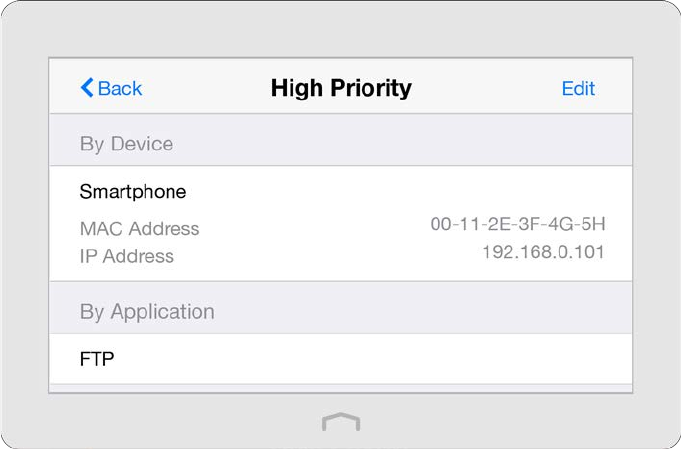
Name: Type in a name for your application.
Protocol: Select the protocol for your application, if you are not sure, select ALL.
Port: Enter the destination port for your application, usually each application has a fixed port, please ensure
you enter the correct the port.
5. The QoS rule will list in the priority table.
Note: If you want to add or delete a QoS rule, tap Edit to set up according to your needs.
Chapter 2 Configure your Touch P5 as a Router 38
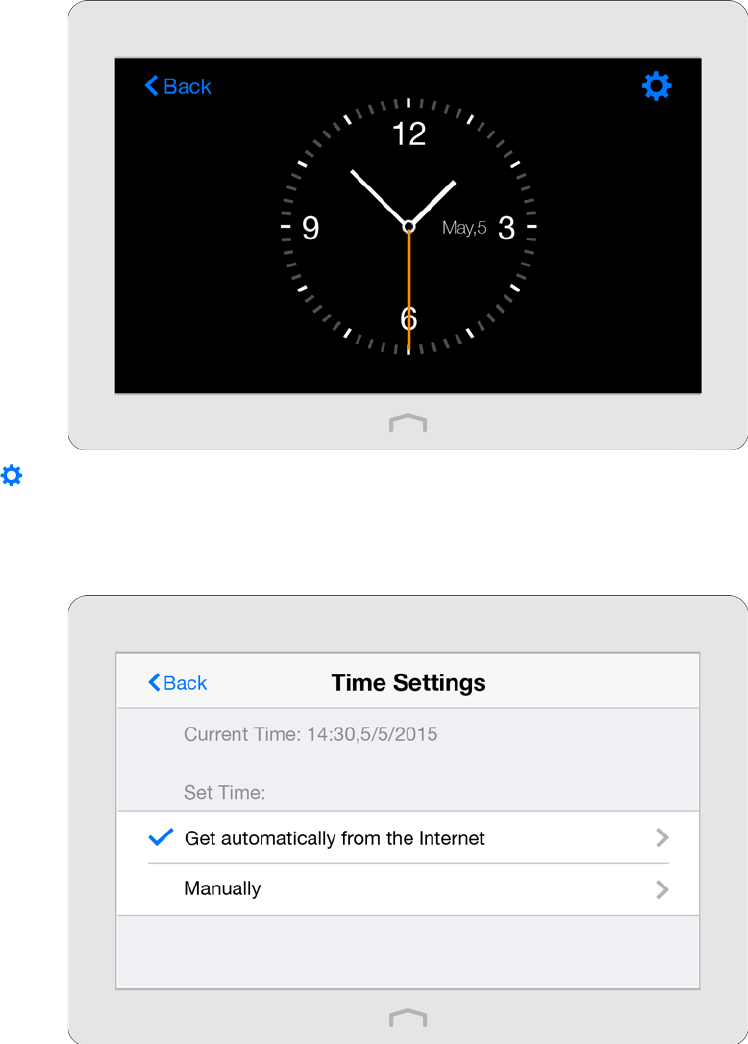
2.15 Clock
The Clock app displays the time while the router is running. The system time you configure here will be used for other
time-based functions like Parental Controls.
1. On the menu screen, tap the Clock icon to open it.
2. Tap to configure the time settings.
To set the time of the router:
1. Select Time Settings.
2. Two ways for you to configure the system time:
Get automatically from the Internet: Select this if you want to get time from the Internet. Make sure your router
can access the Internet before you select this way to get system time.
1) Select your local Time Zone.
Chapter 2 Configure your Touch P5 as a Router 39
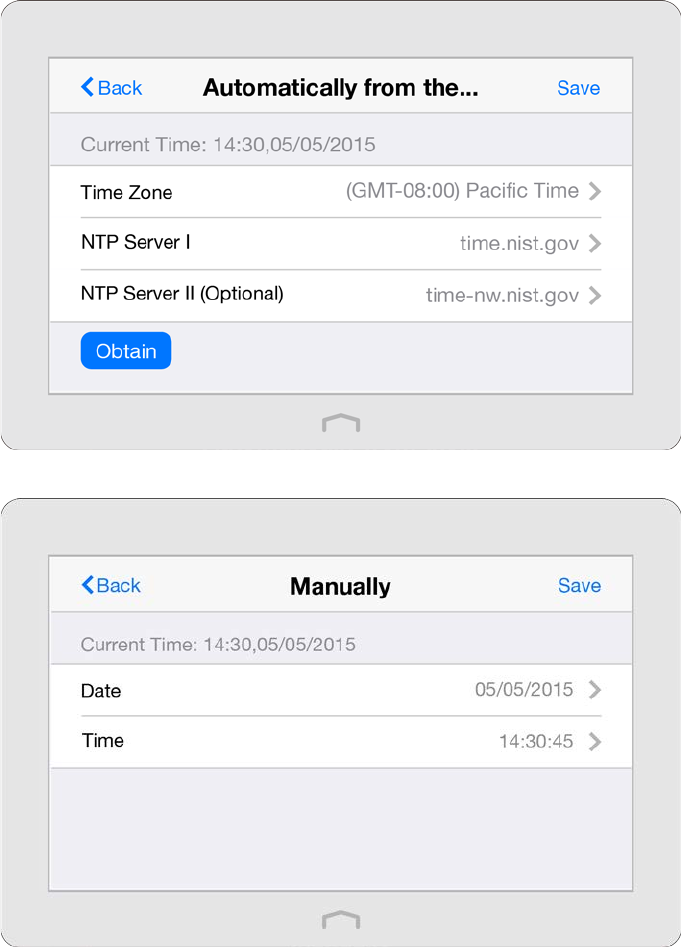
2) In the NTP Server I field, enter the IP address or domain name of your desired NTP Server.
3) In the NTP Server II field, enter the IP address or domain name of the second NTP Server. (Optional)
4) Tap Obtain to get the time and then Save.
Manually: Select to set the data and time manually, then tap Save to make the settings effective.
To set up daylight saving time of the router:
1. Select Daylight Saving Time.
2. Select the checkbox to enable Daylight Saving Time. Set the start and end time and then tap Save to make
the settings effective.
Chapter 2 Configure your Touch P5 as a Router 40
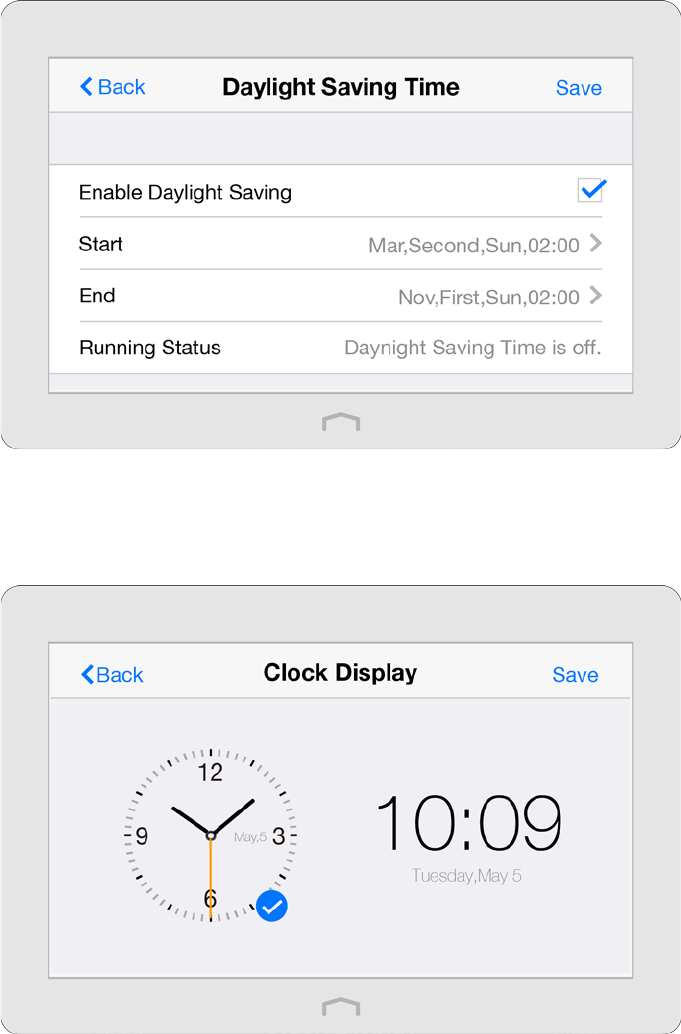
To set up the display type of the clock:
1. Select Clock Display.
2. Select the clock type and tap Save.
3. To use the router as a clock, you need to stay at the home page of Clock app. Then the clock will display on
the screen while the router is locked.
Note: Overusing the screen as a clock will decrease the life span of the screen.
Chapter 2 Configure your Touch P5 as a Router 41
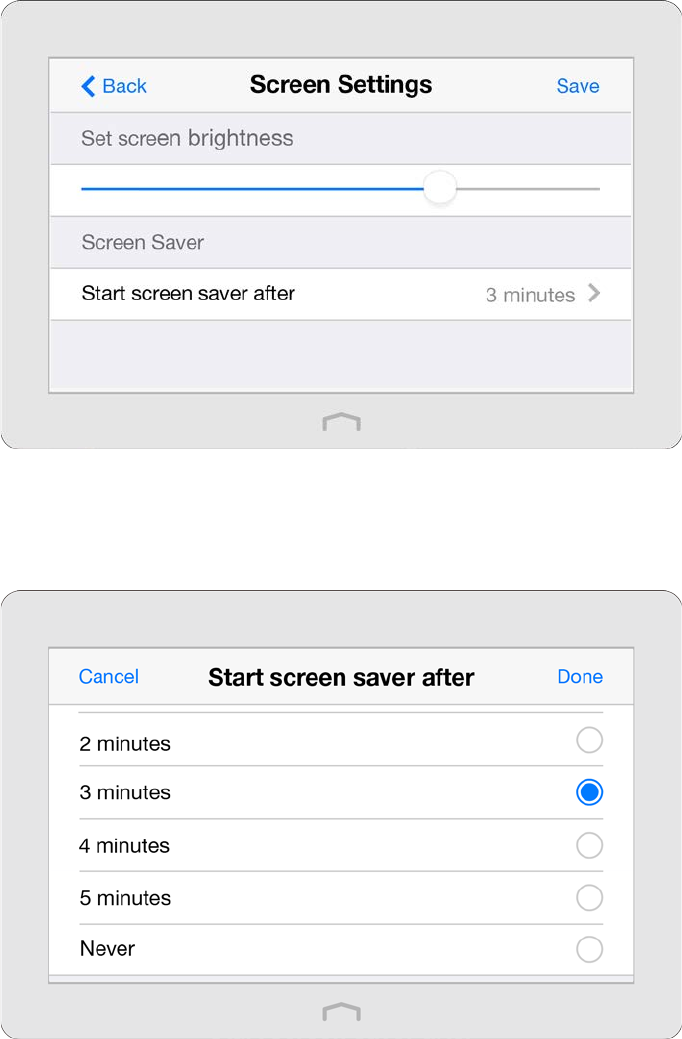
2.16 Screen Settings
The Screen Settings app helps to set the brightness and screen saver of the router.
1. On the menu screen, tap the Screen Settings icon to open it.
2. Drag the scroll bar to set the brightness of the screen.
3. By default, the screen will go to sleep if it is idle for 3 minutes, you can change the wait time.
Note: If you select Never, the screen will stay on and never go to sleep and this will decrease the life span of the
screen.
Chapter 2 Configure your Touch P5 as a Router 42
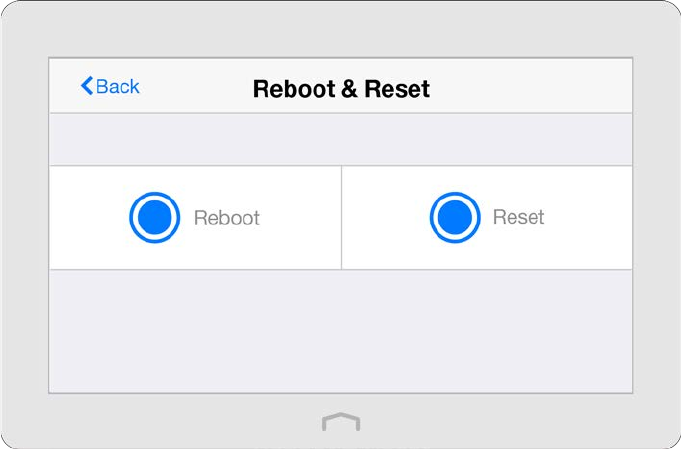
2.17 Reboot & Reset
With Reboot & Reset app, you can restart your router or reset your router to its factory default settings.
1. On the menu screen, tap the Reboot & Reset icon to open it.
2. Reboot: The router will shut down and boot again.
Reset: To reset your router to its factory default settings. It will erase all settings that you have configured for the
router.
Note: Please do NOT power off the router during the rebooting or resetting process.
Chapter 2 Configure your Touch P5 as a Router 43
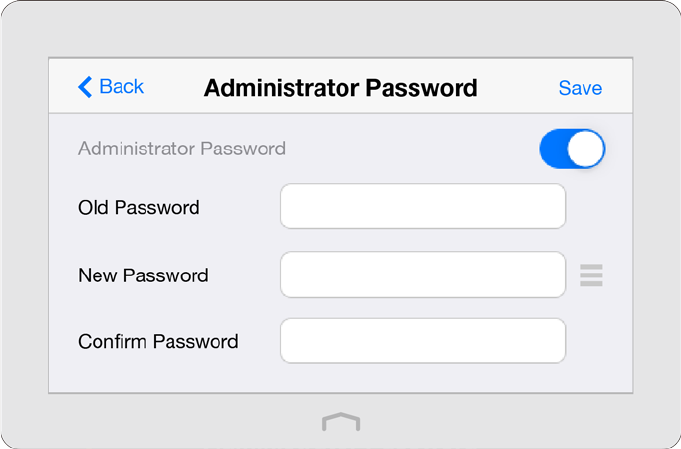
2.18 Administrator Password
Administrator password is used to log in to the touchscreen page and web-management page of the router. You are
required to set a new administrator password at your first login. You can also change it with the Administrator Password
app.
1. On the menu screen, tap the Administrator Password icon to open it.
2. Enter the old password. Enter the new password and enter again to confirm.
3. Tap Save to make the settings effective.
Note:
1. If you disable this function, your touchscreen will under no protection and anyone can change the settings of your
router through the touchscreen. But logging in through web-based management page still requires the password.
2. If you change the administrator password on the screen, logging in through web-based management page also
requires the new password.
Chapter 2 Configure your Touch P5 as a Router 44

2.20 USB Application
This chapter describes how to share and access USB devices connected to the router among different clients through
web-based utility. Refer to Through Web-based Utility to log in the router.
The router only supports USB external flash drives, hard drives and USB printers, and does not support USB 3G/4G
modems.
This chapter contains the following sections:
Local Storage Sharing
Remote Access via FTP Server
Media Sharing
Chapter 2 Configure your Touch P5 as a Router 46

2.20.1 Local Storage Sharing
Share your USB storage devices with different users on the network.
1. Access the USB disk
1) Connect Your USB Disk
Insert your USB storage device into the router’s USB port directly or using a USB cable.
Note:
If you use USB hubs, make sure no more than four devices are connected to the router.
If the USB storage device requires using bundled external power, make sure the external power has been
connected.
If you use a USB hard drive, make sure its file system is FAT32 or NTFS.
Before you physically disconnect a USB device from the router, safely remove it to avoid data damage:
Select
Advanced > USB Settings > Device Settings
and click .
2) Access Your USB Disk
By default all the network clients can access all folders on your USB disk. Refer to the following table for access
instructions. You can also customize your sharing content and set a sharing account referring to Customize
Your Settings.
Windows
computer
1. Press Start
( ) + R on the keyboard (or go to Start
> Run)
2. Type the server address
\\tplinkwifi.net
or
ftp://tplinkwifi.net
in the
dialog box
3. Click OK
Mac
1.
Select Go > Connect to Server
2. Type the server address
smb://tplinkwifi.net
or
ftp://tplinkwifi.net
3. Click Connect
Pad Use a third-party app for network files management.
Note: You can also access using your Network/Media Server Name. Refer to To Customize the Address of the
USB Disk
to learn more.
2. Customize Your Settings
To Only Share Specific Content
By default, Share All
is enabled so all content on the USB disk is shared. If you want to only share specific folders,
follow the steps below:
a. Visit http://tplinkwifi.net/, then log in with the username and password you set for the router.
b. Select
Basic
>
USB Settings
>
Sharing Access
. Focus on the Folder Sharing section. Click the button to disable
Share All, then click Add to add a new sharing folder.
Chapter 2 Configure your Touch P5 as a Router 47
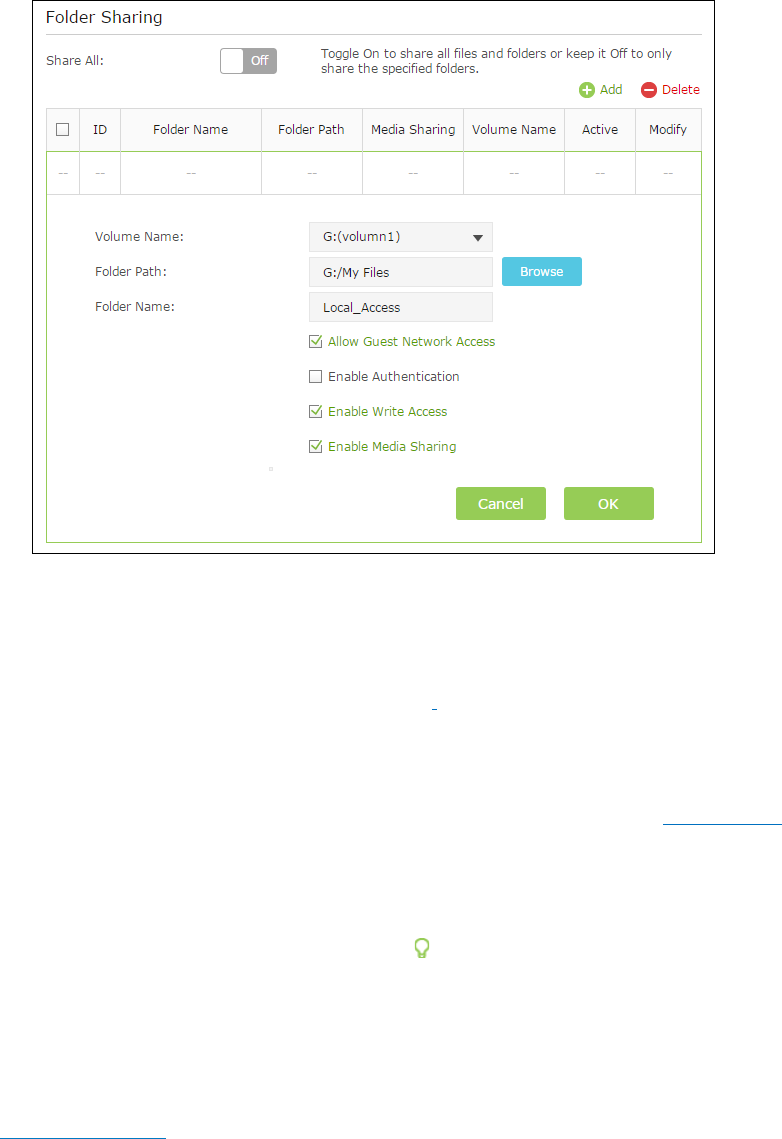
c. Select the Volume Name and Folder Path, then enter a Folder Name as you like.
d. Decide the way you share the folder:
Allow Guest Network Access: Tick to allow the clients in your guest network to access the shared folder.
Enable Authentication: Tick to enable authentication for this folder sharing, and you will be required to use a
username and password to access the USB disk. Refer to
To Set up Authentication for Data Security to learn
more.
Enable Write Access: If you tick this check box, network clients can modify this folder.
Enable Media Sharing: Tick to enable media sharing for this folder, and you can view photos, play music and
watch movies stored on the USB disk directly from DLNA-supported devices. Click Media Sharing
to learn
more.
e. Click OK
.
Note:
The router can share eight volumes at most. You can click on the page to detach the corresponding volume
you do not need to share.
To Set up Authentication for Data Security
If you enable
Authentication, network clients will be required to enter the username and password you set when
accessing the USB disk.
a. Visit http://tplinkwifi.net/, then log in with the username and password you set for the router.
b. Select
Advanced
>
USB Settings
>
Sharing Access
.
Chapter 2 Configure your Touch P5 as a Router 48
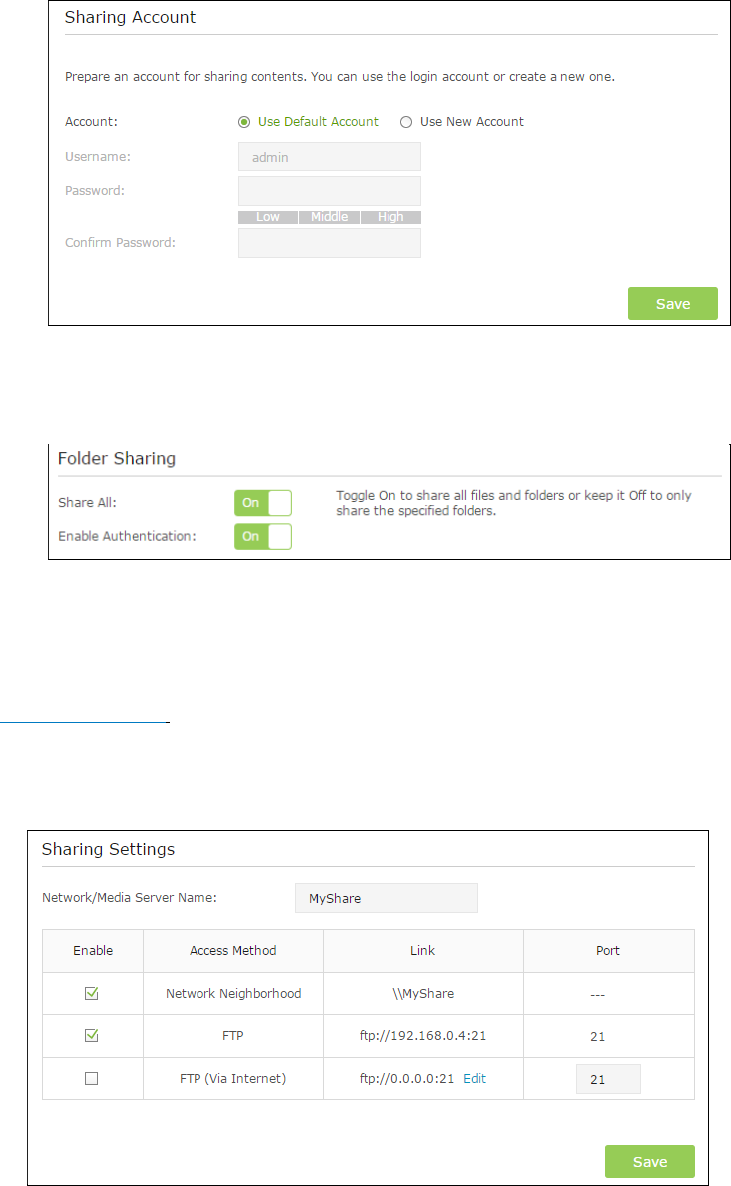
c. Choose to use the default Account (admin) or use a new account and click Save.
d. Enable Authentication to apply the account you just set.
If you leave Share All
enabled, click the button to enable Authentication
for all folders.
If Share All is disabled, enable Authentication
for specific folders.
To Customize the Address of the USB Disk
You can customize the server name and use the name to access your USB disk.
a. Visit http://tplinkwifi.net/
,
then log in with the username and password you set for the router.
b. Go to
Advanced
>
USB Settings
>
Sharing Access
.
c. Make sure Network Neighborhood is ticked, and enter a Network/Media Server Name as you like, such as
MyShare, then click Save
.
d. Now you can access the USB disk with \\MyShare (smb://MyShare
for Mac).
2.20.2 Remote Access via FTP Server
You can access your USB disk outside the local area network.
Chapter 2 Configure your Touch P5 as a Router 49
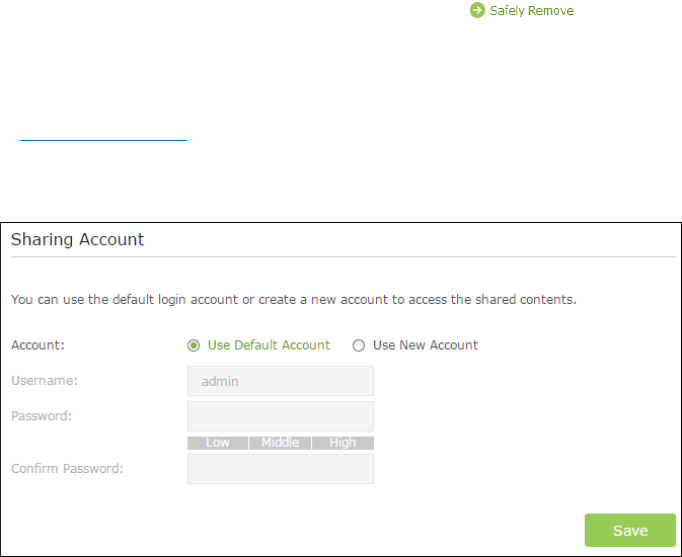
For example:
Share photos and other large files with your friends without logging in to (and paying for) a photo-sharing site or
email system.
Get a safe backup for the materials for a presentation.
Remove the files on your camera’s memory card from time to time during the journey.
Note:
If your ISP assigns a private WAN IP address (such as 192.168.x.x or 10.x.x.x), you cannot use this feature because private
addresses are not routed on the Internet.
1. Access the USB disk
1) Connect Your USB Disk
Insert your USB storage device into the router’s USB port directly or using a USB cable. Wait several seconds
until the USB LED becomes solid on.
Note:
If you use USB hubs, make sure no more than four devices are connected to the router.
If the USB storage device requires using bundled external power, make sure the external power has been
connected.
If you use a USB hard drive, make sure its file system is FAT32 or NTFS.
Before you physically disconnect a USB device from the router, safely remove it to avoid data damage:
Select
Advanced > USB Settings > Device Settings
and click .
2) Enable Authentication for Data Security
It is strongly recommended that you set and apply a sharing account for data security.
a. Visit http://tplinkwifi.net/, then log in with the username and password you set for the router.
b. Select
Advanced
>
USB Settings
>
Sharing Access
.
c. Choose to use the default Account (admin) or use a new account and click Save.
d. Enable Authentication
to apply the sharing account.
If you leave Share All enabled, click the button to enable Authentication for all folders.
Chapter 2 Configure your Touch P5 as a Router 50
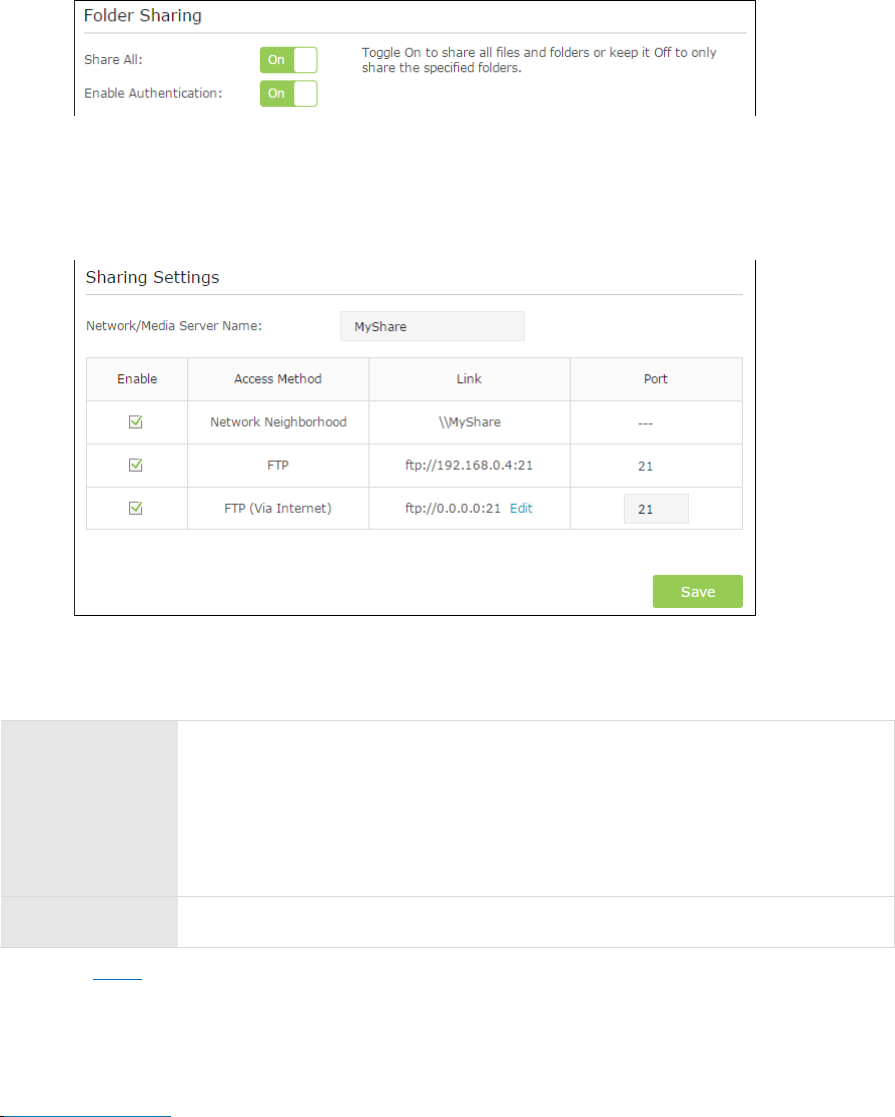
If Share All is disabled, enable
Authentication for specific folders.
3) Enable the FTP(via Internet)
Tick the check box to enable FTP(Via Internet), then click
Save.
4) Access Your USB Disk via Internet
Now different clients with Internet connection can access the USB disk:
Computer
To download, open a web browser and type the server address ftp://<WAN
IP address of the router>:<port number> (such as ftp://59.40.2.243:21) or
ftp://<domain name of the router>:<port number> (such as
ftp://MyDomainName:21) in the address bar, then press Enter on the
keyboard.
To upload, use a third-party app for network files management.
Pad
Use a third-party app for network files management.
Note: Click DDNS to learn how to set up a domain name for you router.
2. Customize Your Settings
By default, Share All
is enabled so all content on the USB disk is shared. If you want to only share specific folders, follow
the steps below:
1. Visit http://tplinkwifi.net/
,
then log in with the username and password you set for the router.
2. Select
Basic
>
USB Settings
>
Sharing Access
.
Focus on the section of Folder Sharing. Click the button to disable
Share All, then click Add
to add a new sharing folder.
Chapter 2 Configure your Touch P5 as a Router 51
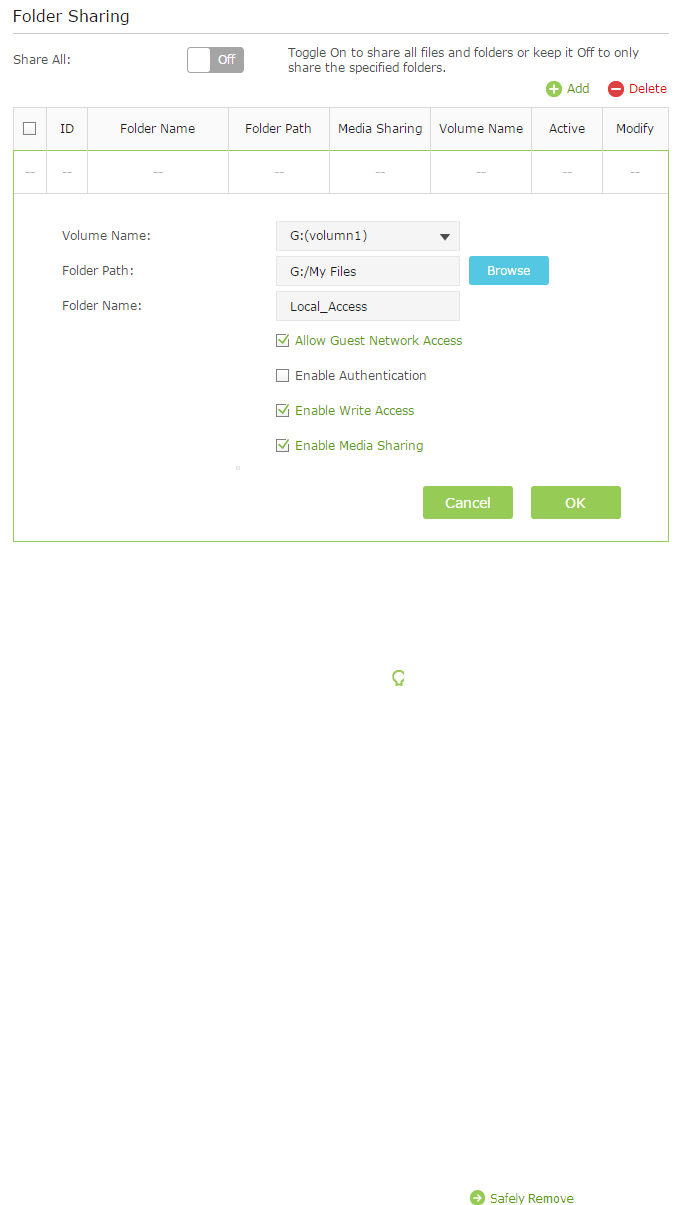
3. Select the Volume Name and Folder Path, then specify the Folder Name as you like.
4. Tick Enable Authentication. If you allow network clients to modify this folder, tick Enable Write Access.
5. Click
OK
.
Note: The router can share eight volumes at most. You can click on the page to detach the corresponding volume
you do not need to share.
2.20.3 Media Sharing
The feature of Media Sharing
allows you to view photos, play music and watch movies stored on the USB disk directly
from DLNA-supported devices, such as your computer, pad and PS2/3.
1. Access the USB disk
1) Connect Your USB Disk
Insert your USB storage device into the router’s USB port directly or using a USB cable. Wait several seconds
until the USB LED becomes solid on.
Note:
If you use USB hubs, make sure no more than four devices are connected to the router.
If the USB storage device requires using bundled external power, make sure the external power has been
connected.
If you use a USB hard drive, make sure its file system is FAT32 or NTFS.
Before you physically disconnect a USB device from the router, safely remove it to avoid data damage:
Select Advanced > USB Settings > Device Settings and click .
2) Access the Media Files on Your USB Disk
Now the DLNA-supported devices connected to the router can detect and play the media files on the USB disks.
For example:
Chapter 2 Configure your Touch P5 as a Router 52
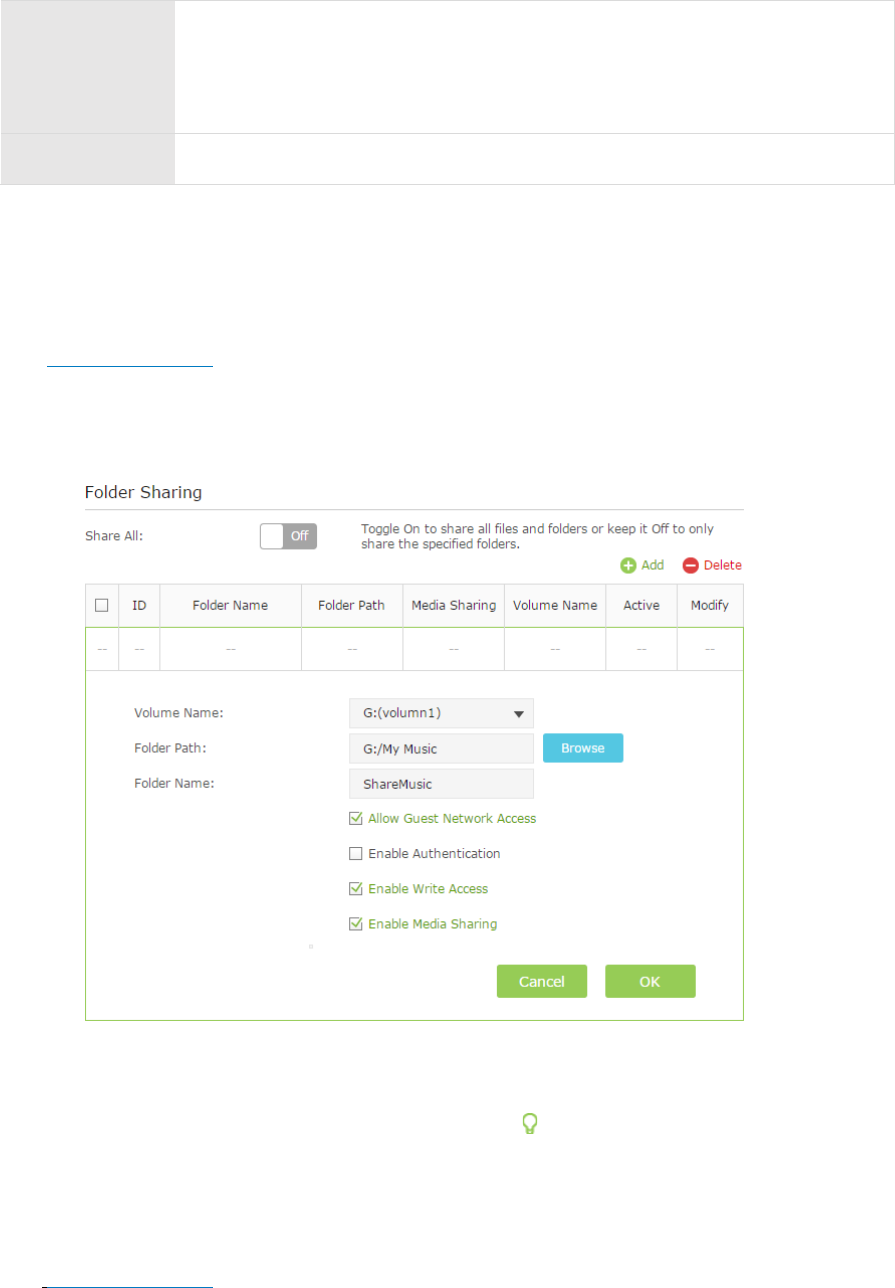
Windows
computer
1. Open the Windows Media Player.
2. Click the media server name (Touch_P5-Share by default) under the list
of Other Libraries, then you can directly view photos, play music and
watch movies that you share on the USB disks.
Pad Use a third-party DLNA-supported player.
2. Customize Your Settings
To Only Share Specific Content
By default, Share All
is enabled so all content on the USB disk is shared. If you want to only share specific folders,
follow the steps below:
a. Visit http://tplinkwifi.net/, then log in with the username and password you set for the router.
b. Select Basic
>
USB Settings
>
Sharing Access
.
c. Focus on the section of Folder Sharing. Click the button to disable Share All, then click Add to add a new
sharing folder.
d. Select the Volume Name
and Folder Path, then enter a Folder Name
as you like.
e. Tick Enable Media Sharing
and click OK.
Note: The router can share eight volumes at most. You can click on the page to detach the corresponding
volume you do not need to share.
To Specify the Media Server
You can also modify the media server name or disable the feature of Media Sharing as needed.
a. Visit http://tplinkwifi.net/
,
then log in with the password you set for the router.
b.
Select Basic
>
USB Settings
>
Sharing Access
.
Chapter 2 Configure your Touch P5 as a Router 53
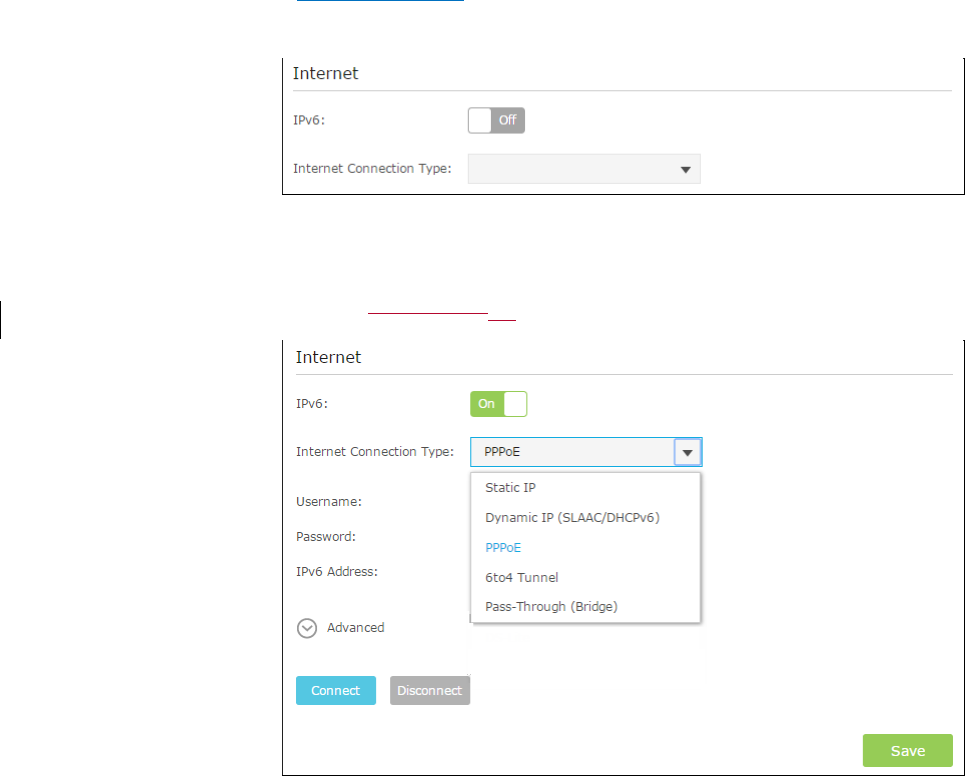
2.21 Set Up IPv6 Connection
If your ISP provides IPv6 connection and has provided some detailed IPv6 parameters, you can configure the router to
permit IPv6 connection.
I want to Connect to IPv6 network with information provided by my ISP.
For example:
my ISP provides information about one of the following Internet connection types:
PPPoE, Dynamic IP, Static IP, 6to4 tunnel, 6RD, DS-lite and Pass-Through (Bridge).
How can I
do that?
1. Visit http://tplinkwifi.net/, and log in with the username and password you set for the router.
2. Go to
Advanced > IPv6 to enable IPv6 connection.
3. Select the Internet connection type provided by ISP. Fill in information as required by different
connection type.
Note:
If you do not know what your Internet connection type is, contact your ISP or judge
according to already knownthe information provided by your ISP.
1) Static IP: Fill in blanks and click Save.
2) Dynamic IP: Click Advanced to have more configuration if ISP requires. Click Save to save
the settings and then click Renew to finish the configuration.
3) PPPoE: Fill in the Username and Password. Click Advanced
to have more configuration if
ISP requires. Click Save to save the settings and click Connect to finish the configuration.
4) 6to4 Tunnel: An IPv4 Internet connection type is a prerequisite for this connection type.
Click Advanced to have more configuration if ISP requires. Click Save to save the settings
and then click Connect to finish the configuration.
Chapter 2 Configure your Touch P5 as a Router 55
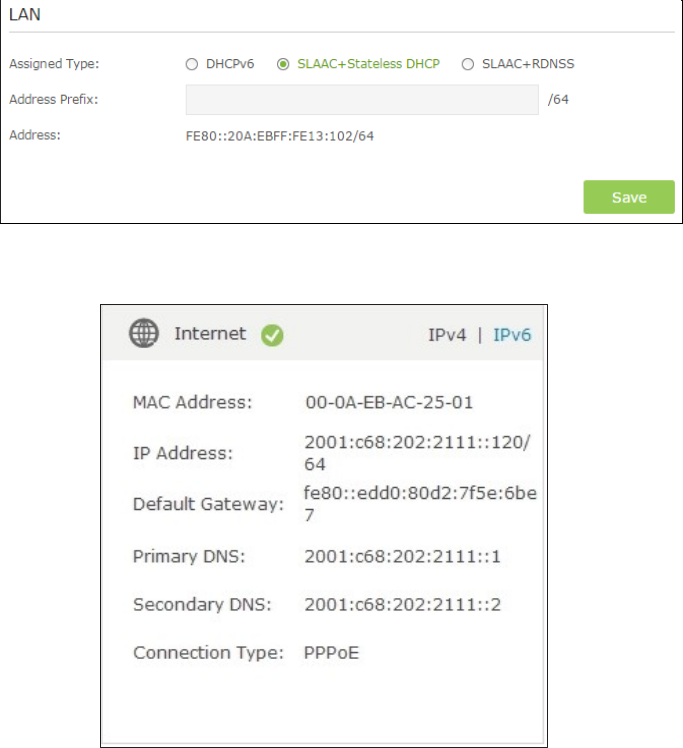
5) Pass-Through (Bridge): Click Save and skip to Step 5.
4.
Configure LAN ports. Windows users are recommended to choose from the first two types. Fill
in Address Prefix provided by ISP, and click Save to save the settings.
Note: Find Help on the management interface to know more about items.
5. Click Status on the left
to check whether you succeed or not. The following figure is an example
of a successful PPPoE configuration.
Done!
Now your router has successfully connected to IPv6 Internet. Devices can connect to the Internet
by wired or wireless connection.
Chapter 2 Configure your Touch P5 as a Router 56

2.22 NAT Forwarding
Router’s NAT (Network Address Translation) feature makes the devices in the LAN use the same public IP address to
communicate in the Internet, which protects the local network by hiding IP addresses of the devices. However, it also
brings about the problem that external host cannot initiatively communicate with the specified device in the local
network.
With forwarding feature the router can penetrate the isolation of NAT and allows the external hosts in the Internet to
initiatively communicate with the devices in the local network, thus to realize some special functions.
TP-LINK router includes four forwarding rules. If two or more rules are set, the priority of implementation from high to
low is Virtual Servers, Port Triggering, UPNP and DMZ.
This chapter contains the following sections:
Share Local Resources in the Internet by Virtual Server
Open Ports Dynamically by Port Triggering
Make Applications Free from Port Restriction by DMZ
Make Xbox Online Games Run Smoothly by UPnP
Chapter 2 Configure your Touch P5 as a Router 57
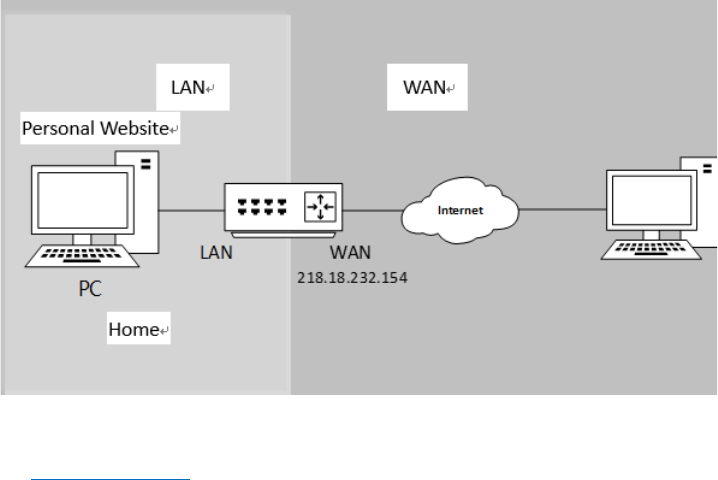
2.22.1 Share Local Resources in the Internet by Virtual Server
When you build up a server in the local network and want to share it on the Internet, Virtual Server can realize the service
and provide it to the Internet users. At the same time virtual server can keep the local network safe as other services are
still invisible from the Internet.
Virtual server can be used for setting up public services in your local network, such as HTTP, FTP, DNS, POP3/SMTP and
Telnet. Different service uses different service port. Port 80 is used in HTTP service, port 21 in FTP service, port 25 in SMTP
service and port 110 in POP3 service. Please verify the service port number before the configuration.
I want to Share my personal website I’ve built in local network with my friends through the Internet.
For example: The personal website has been built in my home computer (192.168.0.100). I hope
that my friends in the Internet can visit my website in some way. The computer is connected to the
router with the WAN IP address 218.18.232.154.
How can I
do that?
1. Assign a static IP address to your computer, for example 192.168.0.100.
2. Visit http://tplinkwifi.net, and log in with the username and password you set for the router.
3. Go to Advanced -> NAT Forwarding -> Virtual Servers, and click Add.
4. Click View Existing Services, and select your Service Type (in this case: HTTP). The External Port,
Internal Port and Protocol will be automatically filled with contents. Enter the computer’s IP
address 192.168.0.100 in the Internal IP field.
5. Click OK to save the settings.
Chapter 2 Configure your Touch P5 as a Router 58
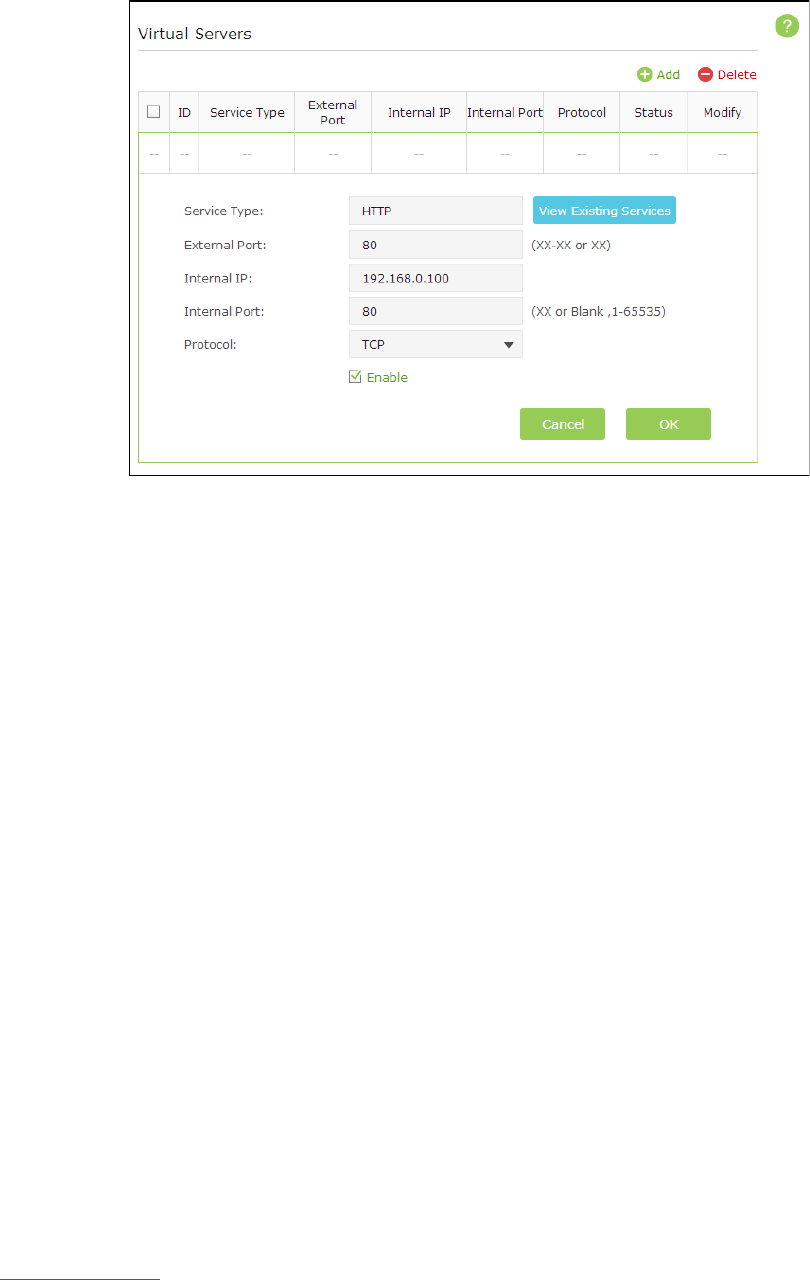
Note:
1) It is recommended to keep the default settings of Internal Port and Protocol if you are not
clear about which port and protocol to use.
2) If the service you want to use is not in the list of Service Type
, you can enter the
corresponding parameters manually. You should verify the ports number that the service
need.
3)
You can add multiple virtual server rules if you want to provide several services in a router.
Please note that the External Port cannot be overlapped.
Done! Users in the Internet can enter Service Type://WAN IP to visit your local resources. (in this case, enter
http://218.18.232.154 to visit your personal website).
Note:
1)
WAN IP should be a public IP address. For the WAN IP is assigned dynamically by ISP, it is
recommended to apply and register a domain name for the WAN by DDNS. Then you can use
Service Type://Domain Name to visit your local resources
2) If you have changed the default External Port, you should use Service Type://WAN IP:External
Port or Service Type://Domain Name:External Port to visit your local resources
2.22.2 Open Ports Dynamically by Port Triggering
Port triggering can specify a triggering port and its corresponding external ports. When a host in the local network
initiates a connection to the triggering port, all the external ports will be opened for subsequent connections. The router
can record the IP address of the host. When the data from the Internet return to the external ports, the router can forward
them to the corresponding host. Port triggering is mainly applied to online games, VoIPs and video players. Common
applications include MSN Gaming Zone, Dialpad and Quick Time 4 players, etc.
Follow the steps below to configure the port triggering rules:
1. Visit http://tplinkwifi.net, and log in with the username and password you set for the router.
2. Go to Advanced ->NAT Forwarding -> Port Triggering and click Add.
Chapter 2 Configure your Touch P5 as a Router 59
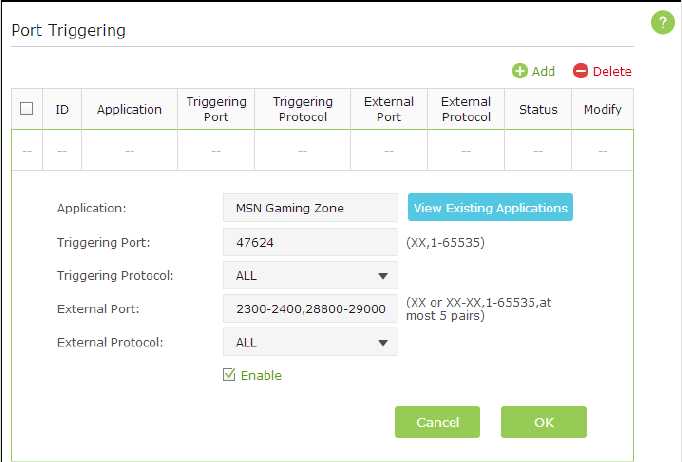
3. Click View Existing Applications, and select the desired Application. The External Port, Internal Port and Protocol will
be automatically filled with contents. The following picture takes application MSN Gaming Zone as an example.
4. Click OK to save the settings.
Note:
1) You can add multiple port triggering rules according to your network needs.
2) The external ports of different rules cannot be overlapped.
3) One rule can only be used by one host at one time. Other hosts’ request at the same time will be rejected.
4) At any time, one host can only use one Port Triggering rule.
5) If the application you want to use is not in the list of Existing Applications, you can enter the corresponding
parameters manually. You should verify the ports number that the application need.
2.22.3 Make Applications Free from Port Restriction by DMZ
When a computer is set to be a DMZ (Demilitarized Zone) host in the local network, it is totally exposed to the Internet,
which can realize the unlimited bidirectional communication between internal hosts and external hosts. The DMZ host
becomes a virtual server with all ports opened. When you are not clear about which ports to open in some special
applications, like IP camera and database software, you can set the computer to be a DMZ host.
Note:
DMZ is more applicable in the situation that users are not clear about which ports to open. When it is enabled,
the DMZ host is totally exposed to the Internet, which may bring some potential safety hazard. If DMZ is not in use,
please disable it in time.
I want to: Make the home computer join the Internet online game without port restriction.
For example: Due to some port restriction, when playing the online games, you can login normally
but cannot join a team with other players. To solve this problem, set your computer as a DMZ with
all ports opened.
Chapter 2 Configure your Touch P5 as a Router 60
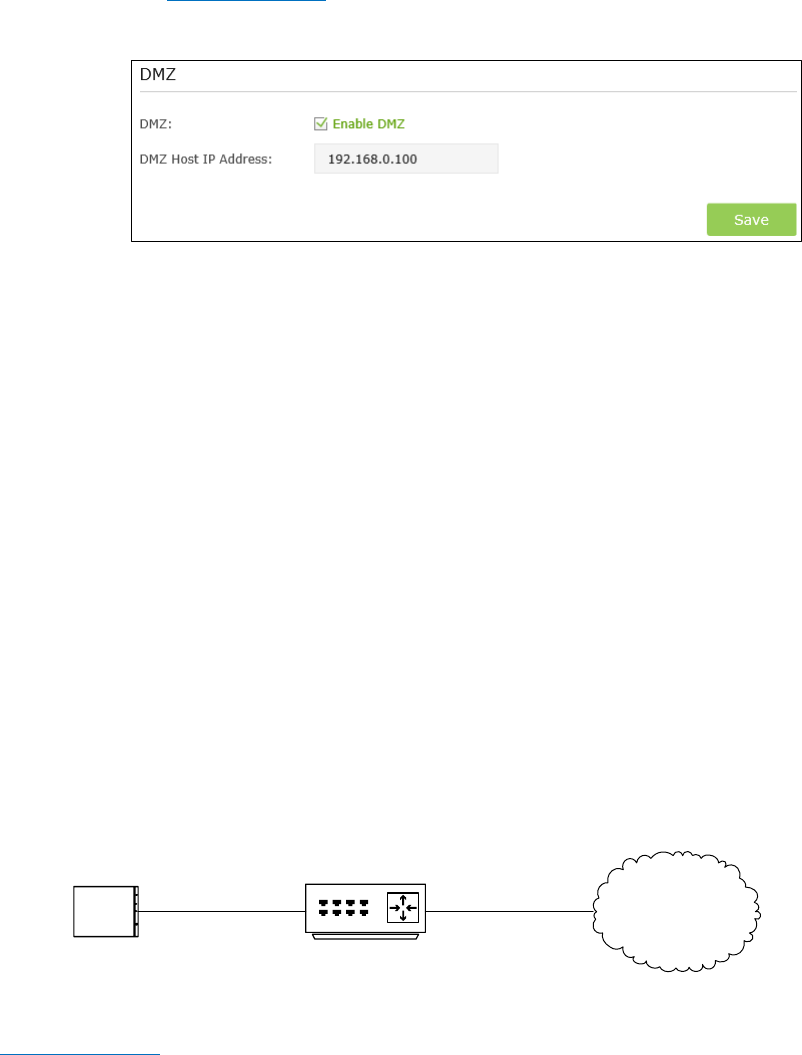
How can I
do that?
1. Assign a static IP address to your computer, for example 192.168.0.100.
2. Visit http://tplinkwifi.net, and log in with the username and password you set for the router.
3. Go to Advanced -> NAT Forwarding -> DMZ and select the checkbox to enable DMZ.
4. Enter the IP address 192.168.0.100 in the DMZ Host IP Address filed.
5. Click Save to save the settings.
Done! The configuration is completed. You’ve set your computer to a DMZ host and now you can make
a team to game with other players.
2.22.4 Make Xbox Online Games Run Smoothly by UPnP
UPnP (Universal Plug and Play) protocol allows the applications or host devices to automatically find the front-end NAT
device and send request to it to open the corresponding ports. With UPnP enabled, the applications or host devices in
both sides of NAT device can freely communicate with each other, thus realizing the seamless connection of the
network. You may need to enable the UPnP if you want to use applications for multiplayer gaming, peer-to-peer
connections, real-time communication (such as VoIP or telephone conference) or remote assistance, etc.
Note:
1. Only the application supporting UPnP protocol can use this feature.
2. UPnP feature needs the support of operating system (e.g. Windows Vista/ Windows 7/ Windows 8, etc. Some of operating
system need to install the UPnP components).
For example: When you connect your Xbox to the router which has connected to the Internet to play online games, UPnP will
send request to the router to open the corresponding ports allowing the following data penetrating the NAT to transmit.
Therefore, you can play Xbox online games without a hitch.
Internet
WANLANXBOX
If necessary, you can follow the steps to change the status of UPnP.
1. Visit http://tplinkwifi.net, and log in with the username and password you set for the router.
2. Go to Advanced ->NAT Forwarding -> UPnP and toggle on or off according to your needs.
Chapter 2 Configure your Touch P5 as a Router 61
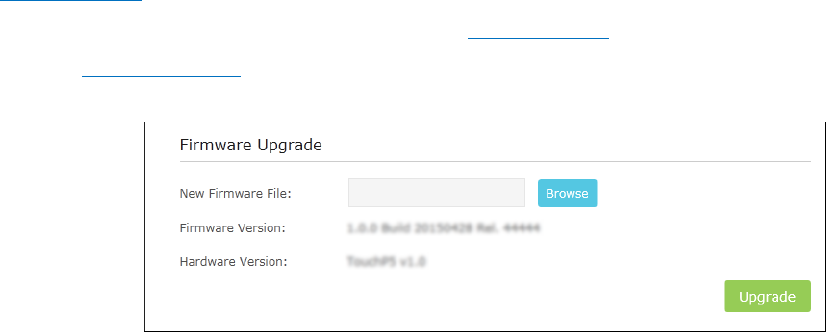
2.23 Update the Firmware
TP-LINK is dedicated to improving and richening the product features, giving you a better network experience. We will
release the latest firmware at TP-LINK official website, you can download the latest firmware file from our website:
www.tp-link.com and upgrade the firmware to the latest version.
1. Download the latest firmware file from our website: www.tp-link.com.
2. Visit http://tplinkwifi.net, and log in with the username and password you set for the router. Go to Advanced >
System Tools > Firmware Upgrade.
3. Click Browse to locate the downloaded new firmware file, and click Upgrade.
4. Wait a few moments for the upgrading and rebooting.
Note:
1. Before upgrading the firmware, it's better to back up your current settings.
2. During the upgrading process, do NOT turn off or reset the router.
3. The upgraded firmware version must correspond to the hardware.
Chapter 2 Configure your Touch P5 as a Router 63
Troubleshooting Guide & FAQ
T1.
What can I do if I cannot access the Internet?
Check if the Internet is working properly by connecting a computer directly to the modem via an Ethernet cable.
If not, contact your Internet Service Provider.
Tap Quick Setup on the menu screen to run the setup again.
Tap Reboot & Reset on the menu screen, select Reboot to reboot the router and try again.
If your Internet Connection Type is Dynamic IP, go through Quick Setup and enter the MAC address that is
registered with your ISP, then reboot both the modem and the router.
T2.
What can I do if I forgot my wireless network password?
Tap Wireless Settings on the menu screen to obtain the security password, both for 2.4GHz and 5GHz wireless network.
For the Guest network, the password displays on the home screen.
T3.
How do I restore the router to its factory default settings?
Tap Reboot & Reset on the menu screen, then tap Reset.
With the router powered on, press and hold the Reset button on the back panel until the Touch P5 logo displays
Note: Once the router is reset, the current configuration settings will be lost and you will need to re-configure the router.
T4.
What can I do if I forgot my administrator password?
With the router powered on, press and hold the Reset button on the back panel until the Touch P5 logo displays to
restore the router to its factory default settings, and create a new administrator password.
T5.
What can I do if I forgot my web-based management utility account?
The default username and password of the web management utility are admin (in lower case).
The web-based management utility and touchscreen shares the same password, please try the administrator password
of the touchscreen.
Restore the router to its factory default settings: With the router powered on, press and hold the Reset button on
the back panel until the Touch P5 logo displays.
T6.
I cannot login the router’s web management page, what can I do?
Make sure the router connects to the computer correctly.
Make sure the IP address of your computer is configured as “Obtain an IP address automatically” and “Obtain DNS server
address automatically”.
Make sure the default access you input is right.
Check your computer’s settings:
1. Go to Start > Control Panel > Network and Internet page, and click View network status and tasks;
2. Click Internet Options on the bottom left;
3. Click Connections, select Never
dial
a
connection;
Chapter 2 Configure your Touch P5 as a Router 64
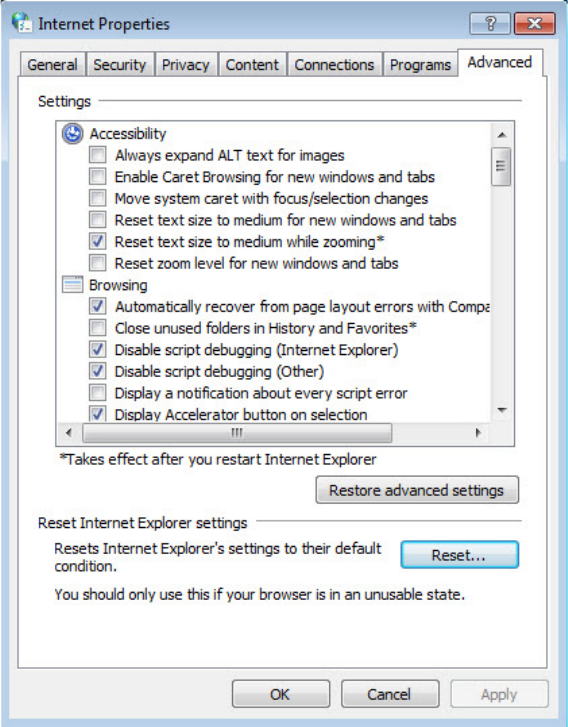
5. Go to
Advanced
>
Restore advanced settings
, click OK to save the settings.
Change a web browser or computer and login again.
Reset the router to factory default settings: With the router powered on, press and hold the Reset button on the
back panel until the Touch P5 logo displays.
Note: You’ll need to reconfigure the router to surf the Internet once the router is reset.
If this doesn’t solve the problem, please contact the technical support.
T7.
I cannot find my wireless network or I cannot connect the wireless network, what can I do?
If you fail to find any wireless network, please follow the steps below:
1. Make sure the wireless function is enabled if you’re using a laptop with built-in wireless adapter. You can refer
to the relevant document or contact the laptop manufacturer.
2. Make sure the wireless adapter driver is installed successfully and the wireless adapter is enabled.
On Windows 7
1) If you see the message No connections are available, it is usually because the wireless function is disabled or
blocked somehow;
Chapter 2 Configure your Touch P5 as a Router 66
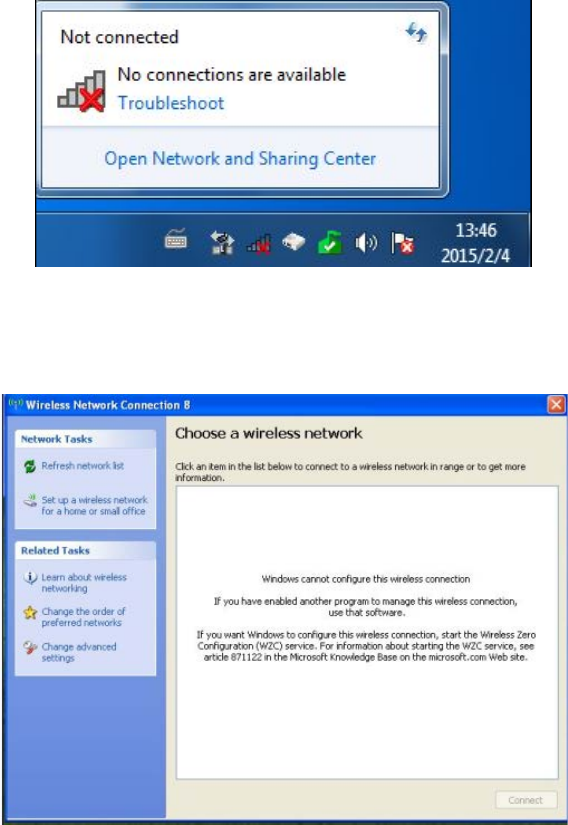
2) Clicking on Troubleshoot and windows might be able to fix the problem by itself.
On Windows XP
1) If you see the message Windows cannot configure this wireless connection, this is usually because windows
configuration utility is disabled or you are running another wireless configuration tool to connect the wireless;
2) Exit the wireless configuration tool( the TP-LINK Utility, for example);
3) Select and right click on My Computer on desktop, select Manage to open Computer Management window;
4) Expand Services and Applications > Services, find and locate Wireless Zero Configuration in the Services list
on the right side;
Chapter 2 Configure your Touch P5 as a Router 67
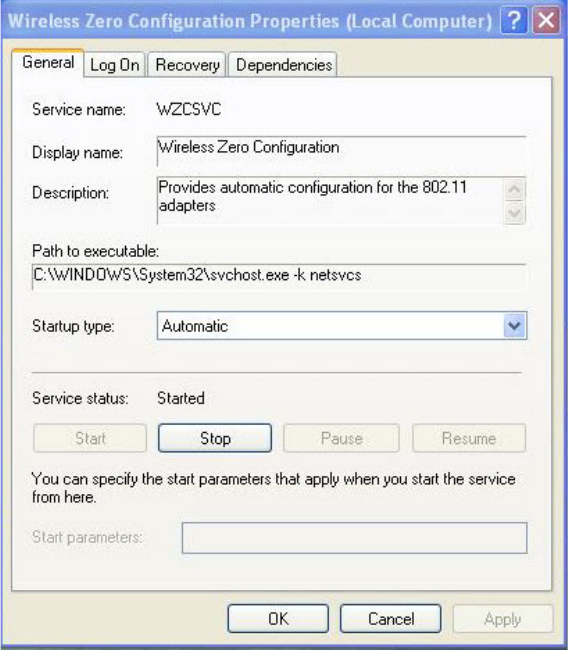
7) Connect to wireless network.
If you can find other wireless network except your own, please follow the steps below:
1. Check the WLAN LED indicator on your wireless router/modem;
2. Make sure your computer/device is still in the range of your router/modem, move closer if it is currently too far
away;
3. Go to
Advanced
>
Wireless
>
Wireless Settings
page, and check the wireless router settings, double check your
Wireless Name , make sure the Region/Country is selected correctly and wireless is not hided;
Chapter 2 Configure your Touch P5 as a Router 69

Appendix A: Specifications
General
Standards and Protocols
IEEE 802.11ac, IEEE 802.11n, IEEE 802.11g, IEEE 802.11b, IEEE 802.11a, IEEE
802.11e, IEEE 802.11i, IEEE 802.1X, IEEE 802.3X, IEEE 802.3, IEEE 802.3u, IEEE
802.3ab
Protocols TCP/IP, PPPoE, DHCP, ICMP, NAT, SNTP
Ports
1 10/100/1000M Auto-Negotiation Internet RJ45 port;
4 10/100/1000M Auto-Negotiation Ethernet RJ45 ports supporting Auto
MDI/MDIX;
1 USB 2.0 port and 1 USB 3.0 port supporting storage/FTP/Media/Print Server;
Cabling Type
10Base-T: UTP category 3, 4, 5 cable (maximum 100m)
EIA/TIA-568 100Ω STP (maximum 100m)
100Base-TX: UTP category 5, 5e cable (maximum 100m)
EIA/TIA-568 100Ω STP (maximum 100m)
1000Base-TX: UTP category 5, 5e cable (maximum 100m)
EIA/TIA-568 100
Ω
STP (maximum 100m)
Safety & Emissions FCC, CE
Wireless
Frequency Band 2.4GHz, 5GHz
Radio Data Rate
11b: 1/2/5.5/11Mbps
11a/g: 6/9/12/18/24/36/48/54Mbps
11n: up to 600Mbps
11ac: up to 1.3Gbps
Frequency Expansion DSSS (Direct Sequence Spread Spectrum)
Modulation
11ac: 256-QAM for OFDM
11n/g/a: QPSK,BPSK,16-QAM, 64-QAM for OFDM
11b: CCK,DQPSK,DBPSK
Security WEP, WPA/WPA2, WPA2-PSK/WPA-PSK
Appendix A: Specifications 70
Antenna 2.4GHz: Omni directional antenna with 2dBi gain
5.0GHz: Omni directional antenna with 2dBi gain
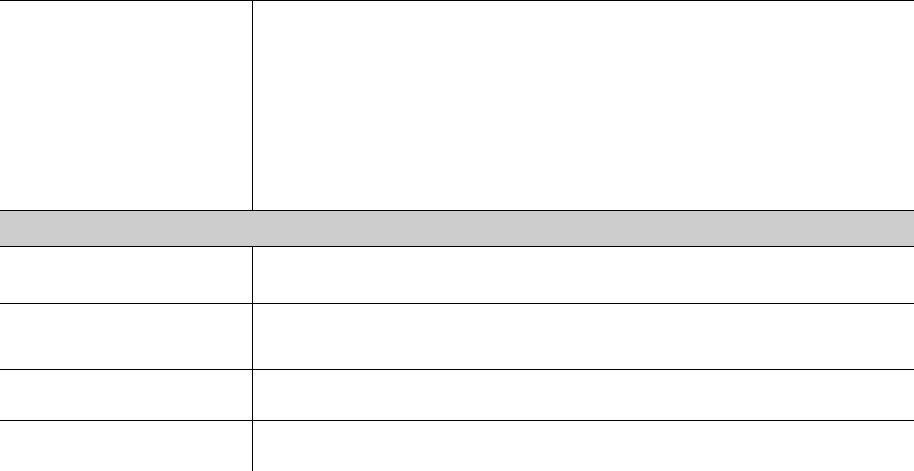
11ac HT20: -66dBm
11ac HT40: -62dBm
11ac HT80: -59dBm
11n HT20: -73dBm
11n HT40: -71dBm
Physical and Environment
Working Temperature 0℃ ~ 40℃ (32℉ to 104℉)
Storage Temperature -40℃ ~ 70℃ (-40℉ to 158℉)
Working Humidity 10% ~ 90% RH, Non-condensing
Storage Humidity 5% ~ 90% RH, Non-condensing
* Only 2.412GHz~2.462GHz is allowed to be used in USA, which means only channel 1~11 is available for American
users to choose.
Appendix A: Specifications 71
Sensitivity
5GHz:
11a 6Mbps: -94dBm
11a 54Mbps: -75dBm
2.4GHz:
11b 1M: -96dBm
11g 54M: -76dBm
Appendix B: Glossary
•
802.11ac
- IEEE 802.11ac is a wireless computer networking standard of 802.11.This specification will enable multi-
station WLAN throughput of at least 1 gigabit per second .This is accomplished by extending the air interface
concepts embraced by 802.11n: wider RF bandwidth, more MIMO spatial streams, multi-user MIMO, and high-
density modulation (up to 256 QAM).
•
802.11n -
802.11n builds upon previous 802.11 standards by adding MIMO (multiple-input multiple-output). MIMO
uses multiple transmitter and receiver antennas to allow for increased data throughput via spatial multiplexing
and increased range by exploiting the spatial diversity, perhaps through coding schemes like Alamouti coding. The
Enhanced Wireless Consortium (EWC) [3] was formed to help accelerate the IEEE 802.11n development process
and promote a technology specification for interoperability of next-generation wireless local area networking
(WLAN) products.
•
802.11b -
The 802.11b standard specifies a wireless networking at 11 Mbps using direct-sequence spread-spectrum
(DSSS) technology and operating in the unlicensed radio spectrum at 2.4GHz, and WEP encryption for security.
802.11b networks are also referred to as Wi-Fi networks.
•
802.11g -
specification for wireless networking at 54 Mbps using direct-sequence spread-spectrum (DSSS)
technology, using OFDM modulation and operating in the unlicensed radio spectrum at 2.4GHz, and backward
compatibility with IEEE 802.11b devices, and WEP encryption for security.
•
DDNS
(
D
ynamic
D
omain
N
ame
S
ystem)
-
The capability of assigning a fixed host and domain name to a dynamic
Internet IP Address.
•
DHCP
(
D
ynamic
H
ost
C
onfiguration
P
rotocol)
-
A protocol that automatically configure the TCP/IP parameters for
the all the computer(s) that are connected to a DHCP server.
•
DMZ
(
D
e
m
ilitarized
Z
one)
-
A Demilitarized Zone allows one local host to be exposed to the Internet for a special-
purpose service such as Internet gaming or videoconferencing.
•
DNS
(
D
omain
N
ame
S
ystem)
-
An Internet Service that translates the names of websites into IP addresses.
•
Domain Name -
A descriptive name for an address or group of addresses on the Internet.
•
DSL
(
D
igital
S
ubscriber
L
ine)
-
A technology that allows data to be sent or received over existing traditional phone
lines.
•
ISP
(
I
nternet
S
ervice
P
rovider)
-
A company that provides access to the Internet.
•
MTU
(
Maximum Transmission Unit
)
-
The size in bytes of the largest packet that can be transmitted.
•
NAT
(
N
etwork
A
ddress
T
ranslation)
-
NAT technology translates IP addresses of a local area network to a different
IP address for the Internet.
•
PPPoE
(
P
oint to
P
oint
P
rotocol
o
ver
E
thernet)
-
PPPoE is a protocol for connecting remote hosts to the Internet over
an always-on connection by simulating a dial-up connection.
•
SSID -
A
S
ervice
S
et
Id
entification is a thirty-two character (maximum) alphanumeric key identifying a wireless local
area network. For the wireless devices in a network to communicate with each other, all devices must be
configured with the same SSID. This is typically the configuration parameter for a wireless computer card. It
corresponds to the ESSID in the wireless Access Point and to the wireless network name.
•
WEP
(
W
ired
E
quivalent
P
rivacy)
-
A data privacy mechanism based on a 64-bit or 128-bit or 152-bit shared key
algorithm, as described in the IEEE 802.11 standard.
Appendix B: Glossary 73
•
Wi-Fi -
A trade name for the 802.11b wireless networking standard, given by the Wireless Ethernet Compatibility
Alliance (WECA, see http://www.wi-fi.net), an industry standards group promoting interoperability among 802.11b
devices.
•
WLAN
(
W
ireless
L
ocal
A
rea
N
etwork)
-
A group of computers and associated devices communicate with each other
wirelessly, which network serving users are limited in a local area.
Appendix B: Glossary 73

COPYRIGHT & TRADEMARKS
Specifications are subject to change without notice. is a registered trademark of TP-LINK
TECHNOLOGIES CO., LTD. Other brands and product names are trademarks or registered trademarks
of their respective holders.
No part of the specifications may be reproduced in any form or by any means or used to make any
derivative such as translation, transformation, or adaptation without permission from TP-LINK
TECHNOLOGIES CO., LTD. Copyright © 2015 TP-LINK TECHNOLOGIES CO., LTD. All rights reserved.
http://www.tp-link.com

FCC STATEMENT
This equipment has been tested and found to comply with the limits for a Class B digital device, pursuant
to part 15 of the FCC Rules. These limits are designed to provide reasonable protection against harmful
interference in a residential installation. This equipment generates, uses and can radiate radio frequency
energy and, if not installed and used in accordance with the instructions, may cause harmful interference
to radio communications. However, there is no guarantee that interference will not occur in a particular
installation. If this equipment does cause harmful interference to radio or television reception, which can
be determined by turning the equipment off and on, the user is encouraged to try to correct the interference
by one or more of the following measures:
•Reorient or relocate the receiving antenna.
•Increase the separation between the equipment and receiver.
•Connect the equipment into an outlet on a circuit different from that to which the receiver is
connected.
•Consult the dealer or an experienced radio/ TV technician for help.
This device complies with part 15 of the FCC Rules. Operation is subject to the following two conditions:
1) This device may not cause harmful interference.
2) This device must accept any interference received, including interference that may cause
undesired operation.
Any changes or modifications not expressly approved by the party responsible for compliance could void
the user’s authority to operate the equipment.
Note: The manufacturer is not responsible for any radio or TV interference caused by unauthorized
modifications to this equipment. Such modifications could void the user’s authority to operate the
equipment.
FCC RF Radiation Exposure Statement:
This equipment complies with FCC RF radiation exposure limits set forth for an uncontrolled environment.
This device and its antenna must not be co-located or operating in conjunction with any other antenna or
transmitter.
“To comply with FCC RF exposure compliance requirements, this grant is applicable to only Mobile
Configurations. The antennas used for this transmitter must be installed to provide a separation distance
of at least 20 cm from all persons and must not be co-located or operating in conjunction with any other
antenna or transmitter.”
The device operates in 5.15 ~ 5.25GHz / 5.745 ~ 5.85 GHz frequency range. It is restricted in indoor
environment only. This device meets all the other requirements specified in Part 15E, Section 15.407 of
the FCC Rules.
CE Mark Warning

This is a class B product. In a domestic environment, this product may cause radio interference, in which
case the user may be required to take adequate measures.
RF Exposure Information
This device meets the EU requirements (1999/519/EC) on the limitation of exposure of the general public to
electromagnetic fields by way of health protection.
The device complies with RF specifications when the device used at 20 cm form your body.
National Restrictions
This device is intended for home and office use in all EU countries (and other countries following the EU
directive 1999/5/EC) without any limitation except for the countries mentioned below:
Country Restriction Reason/remark
Belarus Not implemented
Norway Implemented This subsection does not apply for the geographical area within a
radius of 20 km from the centre of Ny-Ålesund on Svalbard
Italy Implemented The public use is subject to general authorisation by the respective
service provider
Russian
Federation
Limited
implementation
1. SRD with FHSS modulation
1.1. Maximum 2.5 mW e.i.r.p.
1.2. Maximum 100 mW e.i.r.p. Permitted for use SRD for outdoor
applications without restriction on installation height only for purposes
of gathering telemetry information for automated monitoring and
resources accounting systems. Permitted to use SRD for other
purposes for outdoor applications only when the installation height is
not exceeding 10 m above the ground surface.
1.3.Maximum 100 mW e.i.r.p. Indoor applications
2. SRD with DSSS and other than FHSS wideband modulation
2.1. Maximum mean e.i.r.p. density is 2 mW/MHz. Maximum 100 mW
e.i.r.p.
2.2. Maximum mean e.i.r.p. density is 20 mW/MHz. Maximum 100
mW e.i.r.p. It is permitted to use SRD for outdoor applications only for
purposes of gathering telemetry information for automated monitoring
and resources accounting systems or security systems.
2.3. Maximum mean e.i.r.p. density is 10 mW/MHz. Maximum 100
mW e.i.r.p. Indoor applications
Ukraine Limited
implementation
e.i.r.p. ≤100 mW with built-in antenna with amplification factor up to 6
dBi
ATTENTION: Due to EU law, the country settings must be identical to the country where the device is
operating (important due to non-harmonised frequencies in the EU).
Restricted to indoor use.
Canadian Compliance Statement
This device complies with Industry Canada license-exempt RSSs. Operation is subject to the following two
conditions:
(1) This device may not cause interference, and
(2)This device must accept any interference, including interference that may cause undesired operation of
the device.
Le présent appareil est conforme aux CNR d’Industrie Canada applicables aux appareils radio exempts de
licence. L’exploitation est autorisée aux deux conditions suivantes :
(1) l’appareil ne doit pas produire de brouillage;
(2) l’utilisateur de l’appareil doit accepter tout brouillage radioélectrique subi, meme si le brouillage est
susceptible d’en compromettre le fonctionnement.)
This radio transmitter (IC: 8853A-P5 / Model: Touch P5) has been approved by Industry Canada to
operate with the antenna types listed below with the maximum permissible gain indicated. Antenna
types not included in this list, having a gain greater than the maximum gain indicated for that type, are
strictly prohibited for use with this device.
Le présent émetteur radio (IC: 8853A-P5 / Model: Touch P5) a été approuvé par Industrie Canada
pour fonctionner avec les types d'antenne énumérés ci-dessous et ayant un gain admissible maximal.
Les types d'antenne non inclus dans cette liste, et dont le gain est supérieur au gain maximal indiqué,
sont strictement interdits pour l'exploitation de l'émetteur.
This device has been designed to operate with the antennas listed below (Appendix A) , and having a
maximum gain of 2 dBi. Antennas not included in this list or having a gain greater than 2 dBi are strictly
prohibited for use with this device. The required antenna impedance is 50 ohms.
To reduce potential radio interference to other users, the antenna type and its gain should be so chosen
that the equivalent isotropically radiated power (e.i.r.p.) is not more than that permitted for successful
communication.
Caution:
(i) the device for operation in the band 5150-5250 MHz is only for indoor use to reduce the potential for
harmful interference to co-channel mobile satellite systems;
(ii) the maximum antenna gain permitted for devices in the band 5725-5850 MHz shall be such that the
equipment still complies with the e.i.r.p. limits specified for point-to-point and non-point-to-point operation
as appropriate; and
(iii) Users should also be advised that high-power radars are allocated as primary users (i.e. priority users)
of the bands 5650-5850 MHz and that these radars could cause interference and/or damage to LE-LAN
devices.
Avertissement:
(i) les dispositifs fonctionnant dans la bande 5150-5250 MHz sont réservés uniquement pour une utilisation
à l’intérieur afin de réduire les risques de brouillage préjudiciable aux systèmes de satellites mobiles
utilisant les mêmes canaux;
(ii) le gain maximal d'antenne permis (pour les dispositifs utilisant la bande de 5725 à 5 850 MHz) doit être
conforme à la limite de la p.i.r.e. spécifiée pour l'exploitation point à point et l’exploitation non point à point,
selon le cas;
(iii) De plus, les utilisateurs devraient aussi être avisés que les utilisateurs de radars de haute puissance
sont désignés utilisateurs principaux (c.-à-d., qu’ils ont la priorité) pour les bandes 5650-5850 MHz et que
ces radars pourraient causer du brouillage et/ou des dommages aux dispositifs LAN-EL.

Korea Warning Statements
당해 무선설비는 운용중 전파혼신 가능성이 있음.
NCC Notice & BSMI Notice
注意!
依據 低功率電波輻射性電機管理辦法
第十二條 經型式認證合格之低功率射頻電機,非經許可,公司、商號或使用者均不得擅自變更頻率、加大
功率或變更原設計之特性或功能。
第十四條 低功率射頻電機之使用不得影響飛航安全及干擾合法通行;經發現有干擾現象時,應立即停用,
並改善至無干擾時方得繼續使用。前項合法通信,指依電信規定作業之無線電信。低功率射頻電機需忍受
合法通信或工業、科學以及醫療用電波輻射性電機設備之干擾。
減少電磁波影響,請妥適使用。
安全諮詢及注意事項
●請使用原裝電源供應器或只能按照本產品注明的電源類型使用本產品。
●清潔本產品之前請先拔掉電源線。請勿使用液體、噴霧清潔劑或濕布進行清潔。
●注意防潮,請勿將水或其他液體潑灑到本產品上。
●插槽與開口供通風使用,以確保本產品的操作可靠並防止過熱,請勿堵塞或覆蓋開口。
●請勿將本產品置放於靠近熱源的地方。除非有正常的通風,否則不可放在密閉位置中。
●請不要私自打開機殼,不要嘗試自行維修本產品,請由授權的專業人士進行此項工作。
Продукт сертифіковано згідно с правилами системи УкрСЕПРО на відповідність вимогам
нормативних документів та вимогам, що передбачені чинними законодавчими актами України.
Radiation Exposure Statement:
This equipment complies with IC radiation exposure limits set forth for an uncontrolled environment.
This equipment should be installed and operated with minimum distance 20cm between the radiator & your
body.
Déclaration d'exposition aux radiations:
Cet équipement est conforme aux limites d'exposition aux rayonnements IC établies pour un
environnement non contrôlé. Cet équipement doit être installé et utilisé avec un minimum de 20 cm de
distance entre la source de rayonnement et votre corps.
Industry Canada Statement
CAN ICES-3 (B)/NMB-3(B)

Safety Information
When product has power button, the power button is one of the way to shut off the product; when
there is no power button, the only way to completely shut off power is to disconnect the product or
the power adapter from the power source.
Don’t disassemble the product, or make repairs yourself. You run the risk of electric shock and voiding
the limited warranty. If you need service, please contact us.
Avoid water and wet locations.
This product can be used in the following countries:
AT BG BY CA CZ DE DK EE
ES FI FR GB GR HU IE IT
LT LV MT NL NO PL PT RO
RU SE SK TR UA US
SG
Adapter shall be installed near the equipment and shall be easily accessible.
The plug considered as disconnect device of adapter.
Use only power supplies which are provided by manufacturer and in the original
packing of this product.

TP-LINK TECHNOLOGIES CO., LTD
DECLARATION OF CONFORMITY
For the following equipment:
Product Description: AC1900 Touch Screen Wi-Fi Gigabit Router
Model No.: Touch P5
Trademark: TP-LINK
We declare under our own responsibility that the above products satisfy all the technical regulations
applicable to the product within the scope of Council Directives:
Directives 1999/5/EC, Directives 2004/108/EC, Directives 2006/95/EC, Directives 1999/519/EC,
Directives 2011/65/EU
The above product is in conformity with the following standards or other normative documents
EN 300 328 V1.8.1
EN 301 489-1 V1.9.2 & EN 301 489-17 V2.2.1
EN 55022: 2010 + AC: 2011
EN 55024: 2010
EN 61000-3-2: 2006 + A1: 2009 + A2: 2009
EN 61000-3-3: 2013
EN 60950-1: 2006+A11: 2009+A1: 2010+A12: 2011+A2: 2013
EN 50385: 2002
EN 301 893 V1.7.1
The product carries the CE Mark:
Person responsible for making this declaration:
Yang Hongliang
Product Manager of International Business
Date of issue: 2015-06-30
TP-LINK TECHNOLOGIES CO., LTD.
Building 24 (floors 1, 3, 4, 5), and 28 (floors 1-4) Central Science and Technology Park, Shennan Rd,
Nanshan, Shenzhen, China
